Text
Street Photography, Beyond Coincidence
Street photography has more to offer than captured coincidences. By looking at its roots, we see its true value.
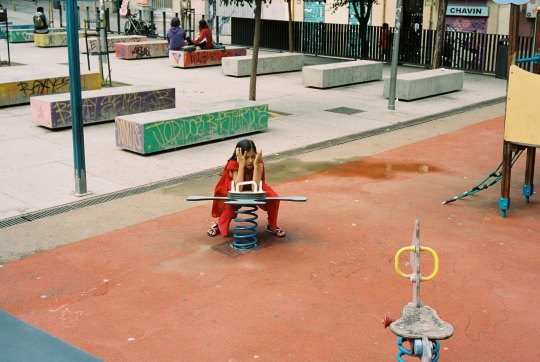
© Neal Gruer
As we all become more aware of the surreality of daily life, isolated images taken out of that context lose their impact.
— A.D. Coleman, New York Times, 22 November 1970
In many respects, spontaneously photographing strangers on the street is the simplest and most accessible way of putting a camera to use. There is no need to wrangle and cajole a subject, no need to learn about artificial lighting; no need to travel much further than a few metres from your front door. It can be done anywhere, day or night, with any equipment. Conversely, mastery of the approach is extremely difficult, given how little control the photographer has over the environment. Easy to pick up, difficult to master — street photography is an activity one can remain indefinitely interested in. Furthermore, the dynamic skills it teaches are widely applicable to other types of photography, as well as to daily life, by transforming how the photographer sees the world.
However, as the practice of street photography has expanded and modernised, it has drifted from its 20th century roots. It has become a genre rather than a description of a practice; an outcome rather than a process; a search for the shallow. By looking at how it began and seeing beyond what it has become, we rediscover how meaningful and valuable street photography can be.
One Small Snap For Man
The microbiologist uses a microscope to make small entities larger. The astronomer uses a telescope to bring distant objects closer. The photographer of people uses a camera to magnify humanity.
To such a photographer, portraiture is equivalent to the microbiologist’s petri dish: contained, specific, exclusive, finite. In turn, the spontaneous and unrehearsed photography of oblivious strangers (commonly, if inadequately, known as “street photography” — more about this definition later) equates to how an astronomer sees the night sky: vast, under-explored, overwhelming, uncertain. While portraiture is a means of interrogating the experience of a specific individual through isolated examination in a controlled environment, photographing people on the street is a means of researching people in orbit; an attempt to map the abundant, turbulent galaxy of humanity more generally. In doing so, the photographer must be simultaneously astronomer and astrologer; cartographer of the constellations, and apostle of the mythology behind them.
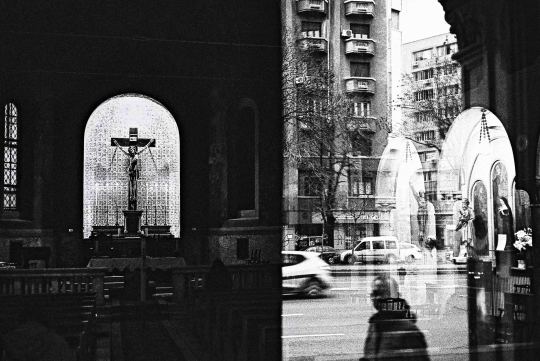
© Neal Gruer
This complimentary combination of observation and interpretation; objectivity and subjectivity; uncovering what is there and defining what it means, exists in some part across all forms of photography. But in the streets, there lives such a wealth of unpredictable eventuality, a photographer can cavort within the elastic space between what is seen and what is to be believed, testing his own ideas and imagination against uncooperative physical surroundings. In this grand expanse, photography becomes part of the perpetual human project of uncovering and understanding life. It contributes answers to the question, What do we do?, which may help answer, Why are we here?
Frank Explanation
The need to define certain photographers’ practices as “street” photography originated as a response to Robert Frank’s difficult-to-categorise work, The Americans (pub. 1958). It took over a decade from that point for the term to crystallise, eventually exercised in the early 1970s, as commentators and curators sought to describe what contemporary photographers were up to on public pavements. Not quite photojournalism, not quite documentation, not quite portraiture, not quite abstract, not quite realist — the method didn’t quite fit into any existing genre of photography, art or academia.

© Robert Frank
Many “street” photographers of the time disliked the term as an over-simplification of their endeavours. It spread a wide net, encompassing many photographic styles, united only by the location of the person holding the camera. Furthermore, considering “street” is rarely used as a complimentary adjective (as -walkers, -food, -dogs, -performers and -sellers can attest) the term has an inherent derisiveness to it, implying that the work is of low-quality, grubby and perhaps a little perverse. A.D Coleman deduced just that in his 1970 New York Times article, offering one of the earliest mentions of the term in print:
The pervasive phenomenon which is coming to be known as “street photography” — a somewhat random, 35mm, snapshooting approach to documentary photography which is an offshoot from (and, in part, a misinterpretation of) the methods of Cartier‐Bresson and Robert Frank — is a problematic one because while street photographers are generally more deeply into the medium than tourists, their results are frequently the same. Qualitatively better, perhaps, and usually more interesting visually; but, as we all become more aware of the surreality of daily life, isolated images taken out of that context lose their impact.
Renowned (street) photographer, Garry Winogrand, spoke specifically of his distaste for the nascent denomination stating: I think that those kind of distinctions and lists of titles like “street photographer” are so stupid. I’m a photographer, a still photographer. That’s it. Lee Friedlander’s feelings were similar — his response to anyone trying to narrowly categorise his photographs inclined towards: Just look at it. In a less absolutist vein, their contemporary Joel Meyerowitz (photographer and co-author of Bystander, the definitive history of street photography) had this to say in 2018 about categorising photographers beyond their use of a camera:
I don’t think that it is necessary in understanding photography to define one from the other [landscape, portraits, street and still lives]. I think photography is an arc that suggests you’re an artist who works with a camera and you make images about whatever interests you. So the generic term ‘photographer’ covers all. However, some people do specialize. They dig in to something, let’s say street photography, and they try to find what is it that’s so essential about photographing quotidian life on the streets of the world, what is it revealing, and what is it doing to the artist who chooses to work that way.
Born without a clear identity and facing apathy from many of its alleged parents , “street photography” was left wide open to subsequent interpretation, adaptation and appropriation. Enter the 21st century, which came along and snatched it from its cradle.
Street Photography, Capitalised
With the advent of digital technology, taking and publishing images became extremely easy. In parallel with these changes, “street” photography morphed from a small-s, small-p, deficient description of certain 20th century artists’ endeavours, to a “capitalised”, proper-noun-pseudo-genre of “Street Photography”. This contortion from description to genre is (unintentionally) well-exemplified by co-author of Bystander, Colin Westerbeck, who explains that Street Photography does not even necessitate the presence of a street:
The street as it is defined here might be a crowded boulevard or a country lane, a park in the city or a boardwalk at the beach, a lively café or a deserted hallway in a tenement, or even a subway car or the lobby of a theater. It is any public place where a photographer could take pictures of subjects who were unknown to him and, whenever possible, unconscious of his presence.
With no “street” required in Street Photography, the term begins to seem absurd. While the creative licence given to the conception of a new definition permits such vagueness, in a modern context, the street-less-ness of Street Photography has stretched that licence to the edge of expiry. Indeed, modern Street Photography can include photographs taken in any “public” place (which in turn merits further definition), with or without people, who can be known or unknown to the photographer, in staged or un-staged circumstances, with or without the participation of the subject. All that remains, as an uncompromised aspect of the root definition, is the appearance of spontaneity within the final photograph. With this precipitous reduction in clarity of meaning, the definition is now a bucket of last resort into which virtually any casual photographic act can be tossed. In its current state, A.D. Coleman’s damning assumption that it was doomed to be facile has come to fruition — a style of photography best characterised by volume, accessibility, amateurism and lack of forethought.
Now that every phone is effectively a point-and-shoot camera, everyone — to one extent or another — is a photographer. The incidental possession of an easy-to-use camera, rather than the urge to take photos, has become the starting point for most people’s entry into photography. Consequently, for the majority, this means the outcome of taking a photograph — how they want it to look in the end — forms the basis of most peoples’ photographic understanding.
Street Photography has followed suit: aesthetics have overtaken ideas; the superficial has superseded the profound; planting the flag has replaced exploration. None of these things could be said about the handful of photographers operating between 1950 and 1990 (such as Joel Meyerowitz, Garry Winogrand, Diane Arbus, Lee Friedlander, Henri Cartier-Bresson, Robert Frank and Mary Ellen Mark) all of whom unknowingly gave rise to the definition of “Street Photography”, but paradoxically, remain poorly represented by it in return.
The Coincidence Obsession
As a result, in the digital age, Street Photography has been overrun by images of inane coincidences or people behaving oddly — “caught” on camera as they go about their lives. Popular images, with their surprise-value or high-contrast aesthetic, tend to elicit little more than a cursory reaction: a short-lived “wow”, an amused “ha”, or a “huh, would you look at that?”. After the initial smirk or frown, they typically demonstrate little else than “coincidences happen” or that people look unusual when they don’t know they’re being photographed.
Audiences at large enjoy coincidences and odd-looking people, but such things are readily visible on a day-to-day basis and are now exhaustively familiar in photographs. Again, this was pre-empted by A.D. Coleman: as we all become more aware of the surreality of daily life, isolated images taken out of that context lose their impact. Wait for long enough in a coincidence-likely spot — under a billboard or on a busy street corner — and a coincidence will occur. Wait a bit longer, and an almost identical or similarly enticing “coincidence” will occur again. Over and over, so-called coincidences will happen — each slightly different, but similar enough to make them almost all trivial. Recording these coincidences and sharing them with others does little to diminish their triviality or offer insight into the human condition — street photography’s original strength.
Indecisive Moments
This proclivity for the prosaic partly stems from a misapprehension of Henri Cartier-Bresson’s “The Decisive Moment” — the first phrase which came to concisely conceptualise “street” photography and the English title of his seminal, 1952 photobook.
In its original French version, the book was titled Images à la Sauvette, which translates as “Images On the Run” (or more accurately for Bresson’s purposes, “On the Fly” or “On the Sly”). For the English version, the American publishers were keen to position the book as a technical guide to photography rather than an art book, so plucked “The Decisive Moment” from the interior text and plopped it on the cover. In a 1973 interview with Sheila Turner-Seed Bresson himself confirmed: I had nothing to do with it.
Taken out of context, this phrase inadvertently altered the orientation of Bresson’s philosophy, famously expressed in his own words at the introduction to The Decisive Moment:
To me photography is the simultaneous recognition, in a fraction of a second, of the significance of an event as well as a precise organisation of forms which give that event its proper expression.
Instead of prioritising the photographer’s irrepressible, instinctive reaction to something he sees (the simultaneous recognition…of the significance of an event), “The Decisive Moment” implies that the event itself (the precise organisation of forms) is the essential element of the image. With that, the photographer becomes more coincidental observer than active participant. The balance of the idea shifts heavily from the photographer’s internal voice finding resonance in the outer world, to recording an external, visually pleasing event. As a concept, “The Decisive Moment” has consequently become viewed as catching a coincidence with good composition — the “right place, right time” -ification of street photography. It is best exemplified by Bresson’s photograph below, of a man jumping over a puddle.

© Henri Cartier-Bresson
Printed in The Decisive Moment, it is perhaps Bresson’s most renowned, most celebrated image; said to epitomise the title. Yet when he took it, his view was obscured by wooden planks. He couldn’t see through his camera’s viewfinder and was oblivious to the man’s leap. The captured moment may have been a decisive one of sorts, but Bresson did not make the decision to record that moment. The image resulted by chance. While this does not necessarily diminish the charm of the photo itself, using it as an architype of Bresson’s philosophy misses the point.
In a letter to Life magazine editor, Wilson Hicks, just prior to publication of The Decisive Moment, Bresson clarified his position on the photographer’s interaction with world he sees (emphasis added):
I did not actually mean that one should exchange his ‘own’ world for the ‘greater world outside’. I believe that through living, one discovers oneself simultaneously with one’s discovery of the world outside; a proper relation has to be established, there is a reciprocal reaction between both these worlds which in the long run form only one. It would be a most dangerous over-simplification to stress the importance of one at the cost of the other in this constant dialogue.
Modern Street Photography has fallen into this trap, presenting an over-simplified view of the world outside at the cost of the photographer’s own world. This absolves the photographer from finding meaning within the moment, beyond its sheer existence. It misses the need for the event to be eloquent, as well as for the photographer to feel something substantial in response to it. It is that feeling — the photographer’s deep, personal sense of stimulation from what is happening before him — which gives a street photograph its value. The thing happening is not, in itself, significant. Without the photographer’s feeling, the moment, in itself, is indecisive.
Repetitive Strain
The website and Instagram feed Street Repeat usefully proves the point. Arising from a fascination about how different Street Photographers take similar photographs, the project creates trios of thematically similar contemporary images:



Instagram, @streetrepeat
While not the intention of Street Repeat, the images it presents reinforce how trite modern Street Photography can be. Contrast this with the work originally described as street photography. It was full of intrigue, because the ideology and individuality of the photographer — the “feeling” behind the images — was self-evident. Whereas modern Street Photography is primarily defined by singular, out-of-context photographs that capture a split-second coincidence with some modest aesthetic value, original street photography had philosophies behind it; deeper expressions of life that gave the complex images (and their creators) enduring relevance.

© Joel Meyerowitz

© Henri Cartier-Bresson

© Lee Friedlander
Before it was so-called, street photography was primarily the task of revealing what a photographer thought, not what he saw. Each photograph was a reaction, not simply a record. Amassed over time, single images were built into descriptive collections, effervescing with authorship. To paraphrase Meyerowitz, having a camera and using it to take pictures was incidental to the artistic intentions of its holder. The camera only happened to be the person’s chosen method of revealing what he already thought — a technical means of achieving a well-considered end. In contrast, modern Street Photography is the end in itself. It is the acquisition of a “type” of photograph — the source of the idea as well as the outcome, objectively showing little more than what happened front of a camera at a certain time and place.
Such is its ubiquity, we are probably stuck with the modern usage of “Street Photography”, but those who take “meaningful photographs of unrehearsed events, compelled by spontaneous emotional responses” deserve to have their work more loosely defined. Such photographers may perform with a “street” mentality — raw, imprecise, and makeshift — but the results can be deeply revealing. At their best, such people are not merely “photographers”, as Winogrand hoped, but in fact philosophers, poets, ethnologists, sociologists, anthropologists, authors and historians; defined not by a genre, but by the insightful ideas their photographs intimate. Beyond coincidence, and even beyond photography — that is where the greatest value lies in photographs from the street.
To see more of my work, including plenty from streets across the world that hopefully extend beyond coincidence and occasionally beyond photography visit nealgruerphotography.com.
0 notes
Text
The Sensational Nothingness of Weight Loss
The cumbersome truth behind shedding unwanted kilos.

© Neal Gruer
In early August, slumped on the sofa like a sonsie haggis stuffed into a sports sock, I finally accepted it. My trousers were too tight. During spring lockdown, while Covid case numbers happily decreased, the numbers on my bathroom scale had been surging in the opposite direction.
Like many others, in pre-lockdown anticipation of being stuck at home, I swiftly purchased a sizable quantity of flour. I rarely buy flour, but it felt like a safety net — if supermarkets ran out of food, with just a little water and a sprinkle of salt, I could still concoct some basic sustenance. Of course, aside from toilet paper, pasta, hand sanitiser and (ironically) flour, the supermarket industrial complex persevered, and the shelves remained healthily stocked. With that, I could have left my flour in peace to become a contentedly superfluous powder; patiently waiting at the back of the cupboard for some kind of cake emergency. Instead, it coerced me.
I set about mastering the dark art of baking chocolate chip cookies. With only me and my partner available to consume the melty, chewy, crunchy discs of delectable deliciousness, the baking brought a lot of eating, justified by the “need” to make another batch… you know… for practice.
By batch three, my waist was beginning to suggest I’d had enough practice, but I ploughed on — surely it was worth doing another batch of the exact same recipe to see if, you know, maybe… umm… the texture could be a little better? Nope — by batch five the texture was the same (magical, uplifting, come to papa), but my gut was not.
Thirty Plus
With a well-honed sense of denial, I could claim “the coronavirus made me do it”; that the 100 cookies the pandemic imposed on me were entirely responsible for my weight gain. But who am I kidding? Even with broadly eating healthily and exercising regularly since turning 30, it has taken a while to accept that my body, in its fourth decade, does not function as efficiently as the bouncy little spandex and rubber one I was born with. Like a 1985 Volvo, despite keeping the tyres pumped and the paintwork shiny, without regular servicing under the hood, bits quickly begin to groan and fall off. The suspension gets rusty, the battery loses charge and yes, the drive belt gets a bit flabby.

Uh oh, July 2020.
Weight gain is gradual, a kilo here, a kilo there. Every year, the benchmark changes — “well, this is the weight I am now”. For a while, the incremental increase is minimal enough to tolerate, but eventually a threshold is crossed and an awakening is triggered. In my case, it was a sudden influx of fresh-baked, chocolatey biscuits and the discomforting pinch of taut fabric.
For that realisation, I have my previous self to thank. As a lither, slighter, younger man, I bought clothes ill-suited for growing into. Quite the opposite — I bought togs on the edge of smallness, giving my elder self a message: “When these don’t fit, you’ll have two options: buy a whole new wardrobe or trim some timber”. Being half-Aberdonian and therefore stereotypically unlikely to spring for a costly, multi-season catwalk of replacement outfits, the method was destined to work. Particularly since I was still comfortable with how I looked and felt, I needed a different motivation. When faced with the prospect of shedding fat or shelling out, shed effortlessly beat shell.
So, days before my 35th birthday, I embarked on my maiden attempt to lose a sizeable amount of weight. From a peak of around 84kg (13.2 stone), the aim was to get down to 72kg (11.3 stone); losing around 15% of my mass. Incidentally, that’s 12 bags of flour, enough to make 1200 cookies.
I had very little concept of what those numbers meant in practice. How long would it take? How challenging would it be? Did I (quite literally) have the stomach to get there? I at least hoped that by the time my Dad was carving the turkey-emoji with his iPhone over Zoom, Digital Christmas would not be the only thing I was celebrating. But just 11 weeks later, here I sit — slightly shocked — weighing a little under 70kg (11 stone), lighter than I was 10 years ago. Now, my Aberdonian half is concerned that my winter wardrobe might actually be a little too baggy.
Building the Shed
This isn’t exactly a “how-to”, but if you’re curious, I’ll more fully lay out the practices I used to get there at the end of this article. In short, I took measures to apply the only completely true (but annoyingly facetious) advice I have ever heard about losing weight: “consume fewer calories than you burn”. Work out how much your body needs to function then eat sufficiently less than that until your trousers stop trying to self-detonate.
In this respect, losing weight was conceptually straightforward, if practically a little onerous. Between kitchen scales and the help of an app, I set about measuring every single calorie I consumed, maintaining a low daily target to keep me in check. Besides cutting out some obviously calorific things (bye bye beer, farewell fromage), my diet remained largely the same, only smaller. With the pandemic, socialising and eating out has been minimal, helping enormously to remove temptation and uncertainty about what I was eating. And since I work from home, I had a lot of control over the food around me.
Eating less than I needed worked as advertised. Now, it’s hard to imagine going back to recklessly and gainfully eating unquantifiable calories.

Lighter, September 2020.
The Cumbersome Truth
Having said that, as the weeks rumbled on like an empty stomach, I came to realise why, on a metaphysical level, losing weight and keeping it off is extremely challenging. Why there is a huge industry built around it. Why there are thousands of gadgets for it. Why it fills our social media feeds. Why you’re reading this article about it. It’s not the food, or the habits, or change of lifestyle. It’s the unspoken requirement to combat sensational nothingness. Losing weight is difficult because there is absolutely no tangible sensation that comes from doing it. While the eventual results can be immensely satisfying, the effortful process itself is almost entirely unrewarding.
Of course, good feelings arise once your clothes fit better, you prefer how you look, or you can move around more easily, but these are all consequences of already having lost weight. In the process of losing, even though your body is rabidly consuming bags and bags worth of cookies from the inside, it gives you absolutely no sensation of what it is doing. We talk about burning fat, but we cannot feel the heat. We talk about metabolisms speeding up, but there is no sense of acceleration. We talk about dropping pounds, but cannot see the lumps falling off. We reduce what we eat for long periods in a blind belief that the body will react and eventually show the results, but we get no direct or immediate physical satisfaction from the body’s process of shrinking itself.
Drink more water! Fast intermittently! Cut out carbs! Use smaller plates! Eat spicy foods! Run! Lift weights! Sleep more! Eat less fat! Eat more protein! Eat whatever you want! Chew more slowly! Only eat cabbage!
So goes the advice on “how” to lose weight, but all these tactics fail to acknowledge the cumbersome truth — losing weight is a process of endurance in the face of nothingness. No matter how many gallons of water you guzzle; farty buckets of cabbage you swallow; magnificent, ambrosial, chocolatey cookies you avoid; or slabs of iron you lift, you have to accept that losing weight has no sensation and zero, real-time gratification.
No amount of tools can replace what it would be like to feel the loss of weight as it’s happening; to be able to know what you are doing is having a meaningful effect. Imagine getting a spurt of endorphins each time your body permanently deletes 200 grams from your squishy hard drive. Weight loss would be a breeze. In that respect, it could compete with the giddy feeling of eating a delicious, sweet, fresh-baked — let’s say, for argument’s sake — cookie. Even before you open your mouth, the feelings spark and fly from the smell. How can silent abstinence from the cookie compete with the marvellous sensation of guzzling it? Alternatively, compare it to exercise. As you run, all manner of glands and vessels erupt with liquids and chemicals. Your muscles tighten and tire, or flex and endure. You can feel it all over. Perhaps this is why, despite exercise having only a minimal benefit for weight loss (i.e. a 5km run only burns 1.5 cookies), doing it as part of a weight loss programme might be helpful, since the subsequent tiredness and discomfort at least creates the illusory feeling that you are actively “burning” the weight away.
Fake the Feeling
To make weight loss sustainable, it is imperative to create this kind of artificial feeling — a blinking light on a fitness tracker, extra money in the bank, the satisfaction of a widening gap between tummy and trousers. It’s an intellectual activity rather than a physical one. As the process goes on, the good feeling comes from decreasing numbers on your scale or the reappearance of your waist rather than your body’s natural response to being starved of fodder. It’s strange — feeling nothing, yet knowing that, if you want to see results, you need the nothingness to persist.
Which brings us to the corresponding challenge — time. Weight loss is a thoroughly time-reliant activity. In order for your body to achieve the organic change you’re demanding, it needs time. Your body knows nothing about calories, kilos or clocks. All it knows is that it has to keep going — the Volvo keeps sputtering on, with less fuel in the tank. One day to the next, your body is indifferent for your need to see progress. Cutting 500 calories a day might feel like something huge for you, but your body operates on longer time frames, with bigger equations. It needs to experience a drop of thousands of calories per week, or tens of thousands a month before it shows its hand. Some weeks it will, others it won’t.
To combat sensational nothingness and this viscosity of time, losing weight requires two, hard to access characteristics — patience and delayed gratification, both things we are born without. Our recently digitised, consumerist culture of speed and immediacy strives so hard to keep us from gaining them — especially when it comes to food. It’s a significant test of resolve, or alternatively, indifference. To get through it, you either have to become either a pious believer, dogmatically following the 54 Cosmo Commandments of weight loss, using every trick and tool to reach nirvana; or an indifferent agnostic, setting new behaviours and blindly going following them, occasionally acknowledging that your body has changed. Either way, while undergoing the process, it is unflinchingly thankless and strangely dissatisfying.
Yet, here I am, 14kg lighter and, I suppose, happy not to be 14kg heavier. In honesty it’s still not the number on the scale that pleases me, nor that I look slimmer. Mainly, I am happy because my clothes are no longer under such duress, and as a consequence, my money remains in my bank account, instead of with Zara.
So, if you’re attempting to lighten the lockdown lumber, find your artificial feeling, eat fewer calories than your body needs, trust the process and accept the nothingness. Eventually, you’ll get the rewards.
(And sorry if you are now insatiably desirous of cookies.)
...
What I did, If You’re Interested
Knowing the recommended calorie intake for men is 2500 per day (which, in all honesty, seems high if you mostly sit at a desk), I plucked an arbitrarily round, low-seeming number out of the air (1500), and plugged it into Under Armour’s MyFitnessPal app. It’s a bit clunky but very functional, featuring a huge database of pre-loaded ingredients; and the ability to build the calorie content of home-made recipes, or quickly scan barcodes of pre-packaged products and download accurate nutritional information.
I then recorded every single liquid and solid that passed my lips, even water. At the beginning, this required me to be extremely strict on myself. But over time, it got easier and easier, partly through habit, and partly because the process led me to eat fewer and fewer rogue snacks that are easy to forget about.
The type of meals I ate stayed largely the same, although portion size at each sitting decreased significantly. For example, it was fine to have a plate of unctuous, cheesy pasta, so long as the portion only amounted to 550 calories. In this respect, my little kitchen scale became a big part of everyday life. Used in conjunction with the app, I was able to calculate the calories of every meal before cooking it. It is surprising how quickly a meal can go from a reasonable 500 calories to a target busting 800. In general, through habits gained, Monday to Thursday ended up being between 1000 and 1200 calories per day, with Friday to Sunday between 1200 and 1600.
For this, the lockdown-imposed habit of visiting the supermarket just once a week was extremely helpful. Having to plan a week’s eating in advance takes the spontaneity out of deciding what to eat, therefore avoiding sudden hunger, ill-advised snacks or reaching for the most convenient option. Also beneficial was the lack of opportunity to eat out, sit in coffee shops or socialise in general. Controlling and knowing how many calories you are consuming is incomparably easier when nearly everything you put in your mouth is done at home, you prepare everything you eat yourself, and you know every constituent part of your meal.
The major exception to this was Friday nights, when we would make a hefty take-away order of burgers and fries (and still do). Having a single, pre-ordained, weekly splurge to look forward to — I guess a so-called “cheat day” — made the other six, lighter days more bearable. Importantly, we never saw it as cheating, just part of an overall, calorie-managed week of eating.
Besides that, I introduced a bunch of arbitrary rules: zero alcohol Monday to Wednesday, and minimal booze on the weekend (2–3 units a day). Beer was never consumed at home. Instead, spirits with light mixers, neat whisky or the occasional small glass of wine. Otherwise, water, tea or black coffee. No crisps or bars of chocolate. No desserts Monday to Thursday, but a cookie (or equivalent) permitted on weekends (typically half a cookie with 20g of vanilla ice-cream — an immensely satisfying 160 calories). There were exceptions to these rules — two birthdays to celebrate, infrequent visits to the pub where a beer (or even two!) were had, but for the most part, the rules simply transformed into behaviours — no longer imposed but habitually followed.
I also started running 5km three to five times a week. However, my rate of weight loss seemed completely unaffected when I stopped running for a month, after picking up a small injury. The exercise felt good, and I continue to do it, but the 350 or so calories burnt on each run appear to have little impact on my weight.
Perhaps most importantly, I did all this under pandemic conditions along with my partner, who is virtually my only social companion these days. Having also partaken of the cookie extravaganza, she was equally keen to lose weight. Since we both integrated the weight loss process into our lives, it became extremely normal. I suspect it would have been harder to do alone or with a dissenting partner; or in a non-pandemic environment, with open restaurants and bars; or when nights out and socialising are back on the menu. Done as a pair, it was an enjoyable project: I could congratulate her when the scales reported progress and vice versa. This was especially beneficial when one of us was experiencing an apparent, frustrating stall in progress — it proved that the process was still working, at least for one of us. She lost over 8kg (1 ¼ stone) in the same period.
We have both long since reached our “target” weights, and our bodies have naturally responded by needing fewer calories to function. Even so, we have maintained the same approach to food. We continue to lose small amounts of weight loss but it has slowed considerably from around a kilo a week to a few hundred grams. We both have a (proximate) number in mind, when we will actively stop losing any more weight. Then, we’ll try to find a new balance, where calorie intake closely matches calories burned and our weights stabilise.
Regardless, we will persist with our new eating habits, which have become comfortable to live with. It now seems ludicrous that we ate and drank for so long without any real understanding of how many calories we needed or consumed. Measuring and recording everything has given us a much better sense of what is likely to be in any given meal; training us in portion sizes and kilojoule contents. When we go back to eating without measuring, we will be better at mentally estimating and hopefully, better at avoiding “cookie creep”. All in all, for the sake of a few months of nothingness, the results have been significant and hopefully long-lasting.
4 notes
·
View notes
Text
Embracing Failure in Photography
In every photograph taken, there exists profound potential.
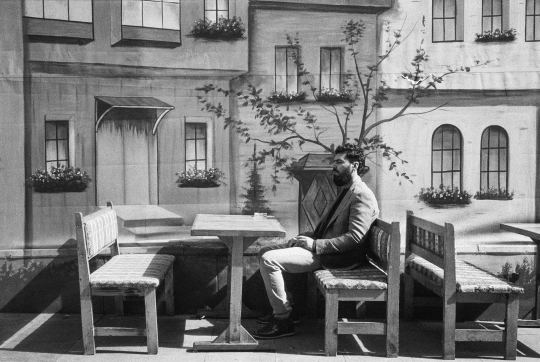
Istanbul © Neal Gruer
We will all end in failure, but that’s not the most important thing. What really matters is how we fail and what we gain in the process.
- Costica Bradatan, In Praise of Failure
An artist’s life is a never-ending, unresolvable, inconclusive search for the perfect expression of an internal sensation as it relates to the wider world. In this endeavour, most are lucky if, a handful of times in their entire lives, they stumble upon something merely approaching “decent”. Consequently, rather than being preoccupied with creating, the artist spends vast resources interrogating themselves from within, and observing the world at large, carrying the faint but persistent hope of working out who they are, what they think, and what is worth expressing. The goal is to produce an artwork that contains at least a slither of that intended expression, and to hope beyond hope for a slither of that slither to contain some understandable meaning. In this regard, art is built from a catalogue of failures, falling one onto another, eventually making a stack tall enough for something to be plucked from the elusive top shelf of meaningful expression.
In photography — particularly the improvised forms of street and field photography — the arduousness of this process is clear. Not only do you need to take a ton of photos in order to find something worthwhile, but you need to spend many exhausting, sole-wearing, soul-wearing hours walking around on high alert, searching. Alex Webb goes as far as to put a number on it, maintaining that “99.9% of street photography is about failure”. Even he, one of the most renowned practitioners in the history of the field, aims for just 1/1000 photographs to be a success, of which only a small percentage will become widely celebrated. If, at best, just 0.1% of an artist’s effort is successful, how is the overwhelming “failure” to be understood?
In life generally, we tend to misplace “failure”. We look at the outcomes of our activity and judge it against arbitrary, extraneous benchmarks. In photography, failure is typically positioned in one of three places: the appearance of the final image; the technique used to take the picture; or “missing the shot” in the first place. In truth, none of these are where the real failure lies. Arguably none are even failures. Instead, the only failure in photography is a failure to see; to purposefully engage. Why? Because regardless of whether you end up with something materially valuable, the contrails of purposeful engagement will linger with you, no matter what.
Failure Fanatic
Personally, by choosing to become a field photographer with manual, mechanical, half-century old, analogue cameras, I have deliriously maximised my relationship with failure. I am a flop aficionado; a bungle believer; a disappointment devotee; a washout worshiper. Compared to digital photography, which is increasingly moving towards a zero percent failure rate, manual film photography has the potential for failure at every turn: leaving the lens cap on; unknowingly using expired film; irreparable over- or under- exposure; inaccurate focus; mechanical failure; failing to wind the film forward; moving too slowly to catch the moment; running out of film before the moment arrives; light leaks from accidentally opening the back of the camera (FFS!!); light leaks from deterioration of the camera’s sealant; film exposed to x-rays in airport security; film lost in the post on its way to the developer; film incorrectly or poorly developed; or maniacally smashing the camera against a wall out of pure frustration at all of the above.
Anyone shooting manually on film must accept, from the outset, that no matter how well-intentioned, experienced, capable or careful, at some point, one of these failures is inevitable. Failure is deeply embedded into the process and only so much within your control.
Beyond the practical failings of taking pictures, in metaphysical terms it is arguable that, rather than only 99.9% of photographs failing, the failure rate is 100%. Whether on film or digital, no photograph will ever fully replicate the internal stimulation that prompted you to take the photo. First, given the limitations of biology, converting a thought into an act can never be done with complete accuracy. It can be close (the exploits of Simone Biles and Nadia Comaneci are testament to that), but there will always be a minute or massive degree of approximation between what you intended to do and what you did. Second, if you do manage to catch a scene as close as physically possible to what you had envisaged, in every photograph there remains an insurmountable structural failure: the inability to convey the entirety of a three-dimensional, five-sensual human experience into a comprehensive, two-dimensional, visual testimony.

Madrid © Neal Gruer
Seeking Success
If indeed the physical act of photographing and the photograph itself are cursed to fail by their very nature, then where in the photographic process can success be found?
Ultimately, each photographer must find success within themselves, in the internal exploit of seeing, and seeing well — the deliberate operation of visual, intellectual conception; grey matter moulding grey clay of sight and emotion into an exhilarating, vibrant sculpture of idea and object. If your body fails to compel the camera into action, or the camera fails to record your bodily response, or if everything goes as well as possible, but the resulting image is lost or destroyed; provided you succeed in the act of instantaneous conception, you will be forever changed, minutely or massively. If you screw it up, lose it, miss it, destroy it: you still saw it; conceived it; “took” it. Even without a camera to hand, the exercise of seeing well offers boundless thrills, but the camera acts as an amplifier, pumping up the volume on the jazzy rhythm of human existence. Fundamentally, it’s about being a photographer rather than taking photographs.
Ironically, this mentality is the furtive ground on which taking meaningful photographs is sown. What you have seen becomes part of who you are, and will forever exist as one of the many grains that fills the beach of a future photograph; a future artwork; a future profound, non-photographic interaction with the world.
Under this process, there is no such thing as missing a shot — there are only shots gained. I shall furnish you with an example.
Photographing Phantoms
As a field photographer, I roam around looking for stirring, naturally occurring scenes to take pictures of. In March 2017, for four days, I was doing this in Bucharest, Romania.
Having nearly finished a roll of film, I took my afternoon break. Inside a coffee shop, a server in boy-fit jeans, a navy roll neck and oversized, wire-rimmed glasses gleefully introduced herself to me: “Cristina”. With hair bundled anarchically into a blonde, cotton candy nest, she took my order and asked me about my camera. Surprised by her enquiry, I fumbled my way through an explanation, vainly attempting to seem simultaneously aloof and interesting.
Immediately, I was taken by her manner and appearance. With one frame remaining before changing the roll, I resolved to ask for her photograph. But between her busyness and my sheepishness, I failed to catch her eye. Despite sipping my flat white as slowly as I could, the opportunity never arose, and with the encroaching dusk hastening my need to get back to work, I relented, clumsily asking one of Cristina’s colleagues to play subject. I took the picture and wound the roll onward, expecting to hear a click. To my surprise, despite showing “37” on the counter (typically the maximum number of frames on a 35mm roll of film), there was no resistance under the winder. I still had one frame left.
Suddenly, positioned by the till under a theatrical spotlight, there stood Cristina. I approached her. Besides paying for my coffee, I paid her a gentle compliment and quietly asked for her picture. She bashfully agreed. I shot and wound to 38. This time, click! In a moment of rom-com reproduction, she asked for my details in order to see my work. Like a struggling salesman at a vacuum cleaner conference, I fingered through my wallet and formally delivered her my card. We exchanged smiles, and I left; flustered but buoyant.
The next evening, I returned to the coffee shop for an evening cocktail event. Cristina was there. We spoke, expansively. After the event, we went to a bar and continued speaking. Then to another, and another; diving deep into the night before floating towards the shallows of early morning and departing each other’s company, possibly forever.
But within three months I had moved to Bucharest. Within four, we were living together. Three and a half years later, here we still are.
Not knowing how this would all turn out, photographically-speaking, you might say two things are important — first that taking Cristina’s photograph furthered the nascent channel of communication between us; and second, that I will always have that precious photograph from the first time we met.
On the latter point, you would be wrong. As it turns out, the last frame on my roll of film was a phantom. There was no film left, no picture to develop. I took her picture but have no picture.
However, I do have her.

Cristina, March 2017
Art Imitating Life
As this (entirely true, yet implausibly romantic) example demonstrates, taking the photo was more important than having the photo. Whereas it would generally be perceived that I failed in taking Cristina’s photo, in truth it was an enormous success. It opened me up and my life was irrevocably changed.
Yes, to have the 3:2 image from that moment would be amusing — one can imagine it being wheeled out over the decades at any major celebration of our partnership; the first, rectangular page of an amorous, amorphous fairy-tale. We would intermittently return to it, pouring over Cristina’s expression, projecting thoughts into her then-head; arbitrarily amending those thoughts to suit our wavering memories of the moment. But self-evidently, the physical image has become entirely irrelevant.
Success was achieved the moment I meaningfully, deliberately, and honestly engaged with the world through my camera— here, in the delightful, atomic shape of Cristina. After doing so, the ability to subsequently show anyone what that moment looked like became largely frivolous. Admittedly, the extraneous consequences of this engagement were extreme — it’s highly unlikely for the love of your life to emerge every time you take a photo (if nothing else, I’m 99.9% certain Cristina would now prefer I ensure this is not the case). In fact, most of the time, I am photographing people who never know I have taken their photo, who I don’t directly speak to. But even if I never saw Cristina after that moment, or had taken her photo without her knowing, I would still have aspired to have been meaningfully transformed by the act of releasing the shutter.
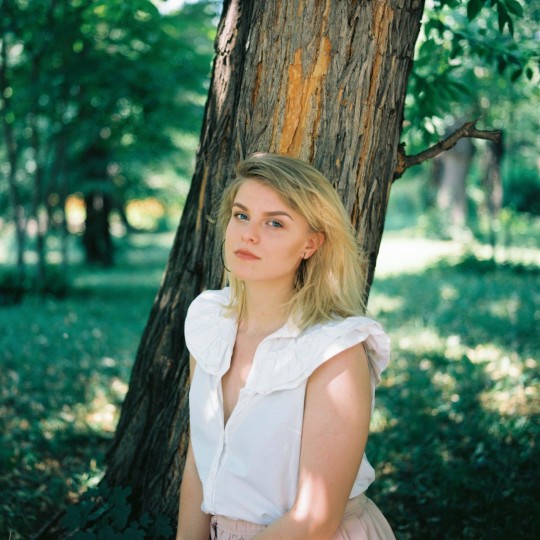
Cristina, June 2017 © Neal Gruer
Finding success in seeing rather than taking equates to a certain philosophical view of life in general, where success lies in being rather than doing. As mortal creatures (at least until Elon Musk devises an alternative), human life is characterised by failure — eventually our bodies flounder, and we cease to exist. Yet arguably, it is the inevitability of this failure which drives us to love, explore, create and accomplish. Being a photographer can help put this philosophy into practice. If you get a few good pictures along the way, all the better.
See more of Neal’s photographic work at nealgruerphotography.com.
0 notes
Text
Drawing Blood: A Monumental Conundrum
Bucharest’s Memorial of Rebirth and the enduring tension between vandalism and art.
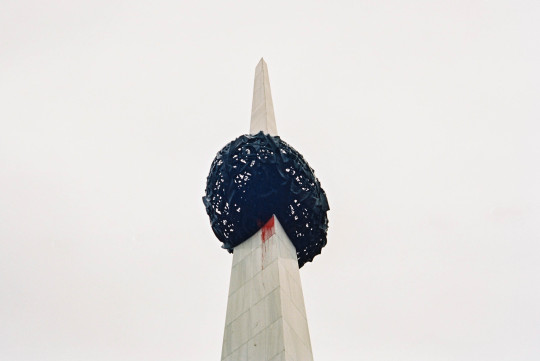
Memorialul Renaşterii, March 2017 © Neal Gruer
Vandalistic behaviour is a feature of malfunctioning, inegalitarian communication channels. It constitutes the speech of the dumb, the powerless and of minorities. There can be no doubt that it is a striking form of interrogation — and that it calls for an appropriate response.
- J. Sélosse, Vandalism: Speech Acts
An egregious act of vandalism was recently committed against one of Bucharest’s most recognisable monuments. Not by a disgruntled teenager, a political protestor, or a subversive artist; but by the State. Locals now pass through Piața Revoluției aghast, disbelieving their eyes as they come across a scene forever changed. Yes, they are shocked to find that City Hall has cleaned and refurbished Memorialul Renaşterii; removing all the graffiti and making it look as good as new.
But wait… how could that be vandalism?
With monuments around the world being criticised, clobbered, coloured and culled for their heritage, questions of “vandalism” are especially pertinent. It is important to understand what we should prize and what should meet its demise. Is vandalism ever legitimate as art or protest? Is it possible for the State to act as vandals? And can vandalism, itself, be vandalised?
The story of Bucharest’s Memorialul Renaşterii (The Memorial of Rebirth) provides a vivid example of just how multi-faceted these questions can become.
Memorialul Renaşterii
Unveiled in 2005, Memorialul Renaşterii commemorates those who died during the 1989 overthrow of Communist dictator, Nicolae Ceaușescu. Standing 25 metres tall on Piața Revoluției (Revolution Square), its main feature is a narrow, white, marble “Pyramid of Success” (Piramida Izbânzii); piercing through a large, embellished, bronze ellipsoid. At its base, a group of abstract figures face Zidul Amintirii (The Wall of Remembrance), which memorialises 1,058 names in brass. The wall is split into two parts by Calea Biruinței (The Road to Victory) — a path of oak logs leading towards the monument. Notably, the entire piece is positioned directly in front of the imposing former headquarters of the Romanian Communist Party.

Memorialul Renaşterii, October 2020 © Neal Gruer
Monuments of this sort have a controversial predisposition — cost, design, placement, politics and corruption are all potential pitfalls. Memorialul Renaşterii was no different, tripping into all of them.
The public cost of 56 billion old lei (equivalent to around €2.1 million today) was considered expensive, particularly while Romania was facing economic upheaval (in 2005, Romania’s currency underwent a massive revaluation exercise, with 10,000 lei becoming 1 leu). The design was widely derided: too abstract; overly complicated; out of place; failing to do justice to those it was supposed to represent; or simply, ugly. Placed alongside numerous existing statues of various styles, it added to a space already overpopulated with incongruous structures, opening another area of grievance.
Furthermore, Romanians were instinctively concerned about the likelihood for pernicious politicisation of the monument, particularly given their tumultuous history, with 11 heads of government over the previous 16, post-Communist years. As for corruption, Romanian politics have been rife with it, so it is unsurprising that many sceptical eyebrows were raised when Alexandru Ghilduş, a man known primarily for product design, was selected to lead the lucrative project. How else could an applied artist — known primarily for designing optical equipment — get the job ahead of 14 other artists, sculptors and architects…? In spite of the apparently open competition for the project, speculation subsists that the selection committee was overruled, with Ghilduş unilaterally chosen by the outgoing, third-term president, Ion Iliescu, who allegedly determined: “This monument is mine and I am the one who chooses it!”
Iliescu himself is the complex, cumbersome hinge of this creaky tale — hero or villain, depending on your preferred version of history. Either way, it is undoubtedly his monument. A former member of the Communist regime who became Romania’s first democratically elected head of state, he was the political face of the ’89 Revolution. Now aged 90, he is currently facing a drawn-out, Covid-delayed trial for crimes against humanity allegedly committed during his initial rise to power. Rather than leading a popular revolt, he stands accused of instigating a conspiratorial coup d’etat through a disruptive campaign of disinformation and media manipulation. His actions are said to have spread confusion and fear between the police, military, and general population in the days after Ceaușescu’s removal, with over 800 people killed amidst the chaos.
Their names now adorn Memorialul Renaşterii.
Regardless of whether objections to the monument were untrue, subjective, unjustified, or purely speculative, the public mood around the project was troubled from the outset. It immediately gained notoriety through an extensive list of inventively derogatory nicknames, many of which are still used to this day. Among them: The Speared Potato, The Failed Circumcision, The Penetration Monument, Brain on a Stick, Olive on a Toothpick, Walnut on a Spike, Skewered Meatloaf, Potato of the Revolution, The Tube and the Testicle, Shit on a Stick, The 56 billion Thorn, and Kitsch with a Diploma.
Naturally, by 2006 it the monument had its first taste of vandalism, embellished with the stencilled face of anarchist character “V” from V for Vendetta. However, after being swiftly cleaned, it enjoyed a period of untouched tranquillity, left alone to prod aimlessly at the sky…
Blood from a Stone
…Until March 2012, when an anonymous act of adventurous vandalism emphatically changed its appearance for the best part of a decade. Under cover of darkness, a modest amount of red paint somehow found its way onto the underside of the bronze globule, causing the monument to “bleed”. Positioned with remarkable accuracy around 20 metres high, how it got there is anyone’s guess, but that it remained there for over 8 years raises just as many questions.
In surviving until this year’s refurbishment, the bloody injury to the marble spire became an essential part of the monument, imbuing it with profundity and animation that was previously lacking. More than a superficial protest against the monument itself, it revealed the invisible subtexts of Romanian society: state inaction at rectifying ills; decades of oppression before democracy; and the tragic violence and corruption after it was obtained. Of course, vigilante remodelling of state monuments isn’t new — in Bulgaria, the short-lived transformation of a Soviet war memorial into a American pastiche provides an amusing illustration. But the simplicity, specificity, solemnity and longevity of that dash of red paint made Bucharest’s effort exceptional.

Monument to the Soviet Army (Паметник на Съветската армия), Sophia, Bulgaria, 2011
On my first visit to Bucharest in 2017, I was stunned by the monument, purely because of the fascinating red accent dripping from its side. It never crossed my mind that it was anything but part of the design — an extremely bold, powerful symbol of lives lost to violence. Upon later discovering it was an act of vandalism, I was even more taken by it — a subtle but meaningful act of illicit interaction with a public artwork, elevating the original piece. Despite not knowing the intentions of the vandal, its effect — deliberate or otherwise — was profound.
And now, it’s gone. Coagulated by the state, only a barely perceptible outline remains, a faded scar of dissent. The unstoppable bleeding not only gave a dose of humanity to a cold, angular structure, it emphasised that all was not what it seemed; that something was amiss; that there was more to the story than the official version — a truth so acute it drew blood from metal and stone. This gratifying graffiti, this pained paint, for so long a mark of exclamation, has finally been deleted.

Memorialul Renaşterii, October 2020 © Neal Gruer
In truth, the monument had fallen into such disrepair that by 2020, an entire renovation was long overdue. It would have required a brave and limber justification to leave the most prominent mark of graffiti while removing the “unartistic” scribbles from the Wall of Remembrance, clearing overgrown grass from the Road to Victory and repairing marble tiles damaged by skateboarders. Cleaning the whole thing made perfect, logical sense.
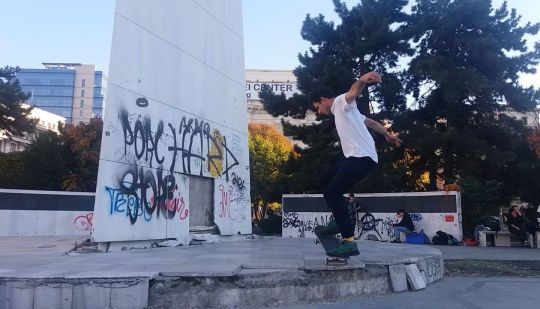
2018 © Pro TV
It just seems that by then, the “whole thing” had come to include that audacious, elegant, dramatic dribble of paint. Just as with Glasgow’s famous Duke of Wellington statue, which would be naked without the perpetual, vandalistic traffic cone on its head, Memorialul Renaşterii has been unthinkably unclothed. Vandalism or not, by wiping away the paint, the monument lost more than it gained.
In lamenting its disappearance, I wonder what my feelings imply. Am I romanticising a wanton criminal act, which desecrated the site and demeaned the work of a celebrated designer? Or did the paint’s erasure undo a legitimate piece of public art and unravel an important, open-air conversation between a state and its people? Where lay the vandalism — in the monument, the paint or the act of cleaning?
Vandalism Wasn’t Built in a Day
Humans have been vandalising since time immemorial, but the term stems back to the unruly Germanic Vandal tribe, who successfully captured Rome for a fortnight in 455 CE. While pillaging the city they destroyed works of art, monuments, statues, and other relics. The Romans, in their cultural enlightenment, were so appalled, the Vandals’ barbaric reputation stuck. Even so, the term Vandalisme wasn’t coined until 1794, when Bishop Grégoire wrote of his upset at the damage to ancient inscriptions after the French Revolution. The Parisien later stated in his memoirs that, “Je créai le mot pour tuer la chose” (I created the word to kill the thing). Evidently, he failed on the latter count — both the word and “the thing” have stubbornly survived.
These days, while vandalism has broadly come to mean anti-social destruction of someone else’s property, its definition remains nebulous; varying between countries, legal systems, cultures, and class structures. No matter where you are, it is almost always considered to be deviant, problematic behaviour. Understandably so — there are obvious costs and consequences to damaging things, particularly in such a visible, public manner. Minor destructive acts can make a place less pleasant to live, amenities less functional, and potentially cause a strain on mental health. Besides that, particularly when done at scale, the economic implications can be huge. It leads some to suggest that vandalism is always detrimental and should never be tolerated, arguably creating an environment for more serious crimes to occur.
Nevertheless, in the mid-20th century, Stanley Cohen and other sociologists began to develop a more nuanced understanding of vandalism. Beside identifying numerous forms of vandalism (including acquisitive, vindictive, tactical, playful, malicious, and ideological), Cohen saw beyond the common conception that it was purely childish, nihilistic behaviour. He acknowledged that a vandal’s motivations were complex and varied, and in certain circumstances, not necessarily deviant:
…in the case of vandalism, the construction of a ‘pure’ or ‘objective’ behavioural definition is only the beginning of the story. It is quite evident that: (i) not all such forms of rule breaking are regarded as deviant, problematic, criminal or even are called vandalism; (ii) not all the rules which forbid illegal property destruction are enforced; (iii) not all the rule breakers find themselves labelled and processed as deviant.
The problem, then, is to explain the conditions under which a society transforms the raw material of rule breaking into fully identified deviance.
- S. Cohen, Sociological Approaches to Vandalism
Blurred Lines
Motivations aside, as an act of vandalism, graffiti — the category into which Bucharest’s splash of red paint would fall — is probably the most prevalent. Practiced since cavemen marked walls with rudimentary shapes, the invention of aerosol spray paint in 1949 made drawing on urban spaces a modern pastime. With such a convenient tool to hand, from the 1960s onwards, graffiti caught the creative imagination. Alongside the burgeoning, anti-establishment musical movements of punk and hip-hop, ripe blank walls — seen as symbols of tyrannous social control — were colourfully reclaimed by gutsy, young, guerrilla painters.
As the techniques and designs of graffiti evolved from simple slogans and “tags” of artists’ names into imaginative murals and illustrations, the practice soon reached mainstream celebration: vandalism suddenly became art. In this context, beside Basquiat, Keith Haring and Blek Le Rat no one is more renowned than Banksy — a man whose very career is a microcosmic example of the art/vandalism conundrum.
Validated Vandalism
Banksy started out as a vandal like any other, illegally spray-painting witty designs onto other people’s property. But such is his escalation in notoriety, great consternation now follows any damage to his unsolicited works. His recent Valentine’s Day piece (stencilled on the side of a Bristolian house) was swiftly defaced, causing the BBC to carry the headline Banksy Mural Vandalised, without irony. Other of his works have frequently been “destroyed” by local councils, sometimes through policy, sometimes accidentally, sometimes by a confused combination of the two — most recently on the London Underground. Sometimes, Banksy’s work has even been destroyed by Banksy himself — most spectacularly when he remotely shredded a print of “Girl with Balloon” moments after it sold at auction for over £1 million. Immediately, art dealers claimed the act had doubled the value of the semi-lacerated piece — some incredibly valuable vandalism.
On the other hand, measures taken to secure Banksy’s work — either by private parties who own the property, or local authorities attempting to preserve these scattered pieces of art history — are themselves considered socially deviant, both towards the artwork itself, and the viewing public who can no longer freely access it. Amid all this multi-directional agitation, it is difficult to establish who exactly is doing the vandalising. Perhaps even more notable than his concepts or painting, Banksy’s great skill is to turn the tables on the powers-that-be, who suddenly seem like vandals themselves by attempting to profit from or disappear his work.
He proves that attractive, clever, or pertinent vandalism can be highly valued; no longer considered deviant if performed by the right hand. Far from offending the social fabric, it transcends social norms and typical comprehension of what is “vandalism” or “art”. It simply becomes a cherished representation of what a society wants to stand for.
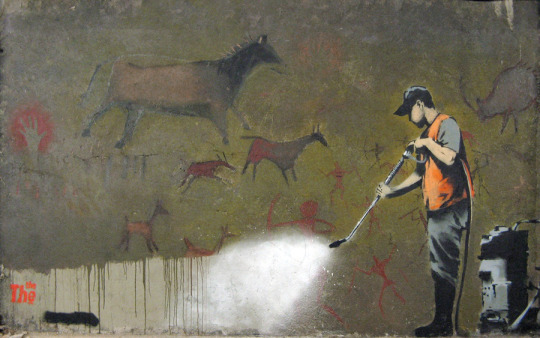
By Banksy, London 2008
Nowhere is this better manifested than by the crayon, charcoal and chalk writings on the walls of Berlin’s Reichstag. Scrawled by Soviet soldiers in 1945 after beating the Nazis in battle, it would have been reasonable to remove the words and seek a “fresh” start. Instead, they were purposefully preserved in place. Persistently visible at the heart of German government, the graffiti serves as a profound reminder of the country’s present freedoms and painful history; a society demonstrably willing to confront itself.
Monumental Questions
Back to Bucharest, where the questions surrounding Memorialul Renaşterii and its evaporated haemorrhage remain: where did the most concerning act of vandalism occur? Across its chequered history, which public act was the most socially deviant? Conceptual vandalism, given the monument was commissioned by the very man who allegedly caused the deaths it seeks to mourn? Fiscal vandalism, by the amount spent on such a controversial project? Aesthetic vandalism, in its divisive design and placement? Ideological vandalism, by the person who tossed the paint? Civic vandalism, in the City’s failure to remove the paint for close to a decade? Or cultural vandalism, by finally cleaning it off after it had become an iconic element of Bucharest’s visual landscape and collective consciousness?
Where vandalism is concerned, the answers lie in the eye of the beholder. In trying to cleanly define something as “vandalism” or “art” we immediately risk losing sight of what “the thing” really is. The paint on Memorialul Renaşterii could have been neither, as much as it could have been both.
Crucially, such a deviant public act is never committed with the expectation it will survive for long. In that sense, this splash of paint achieved far more than the vandal could ever have anticipated. Astoundingly, I first saw the paint during its fifth year. It caused me — a random Scottish-Ghanaian — to look deeper into the monument and Romanian history than I might have otherwise. It stirred in me a multitude of thoughts and feelings, ultimately leading to this article, memorialising its demise. Even in its disappearance, its effects continue to reverberate. By reading this far, you too have become an active participant in the discourse it inspired, along with the millions who saw it and are unlikely to forget it.
With such an expansive impact, “art or vandalism?” no longer matters.
0 notes
Text
Take Your Time
During lockdown, our individual perspectives of time were shaken. If time is subjective, what do we do with it?

© Neal Gruer
Time and space are modes by which we think not conditions in which we live.
— Albert Einstein.
The defining feature of work as a commercial lawyer is not the suit, the intellectual discussion, the clients, the office politics, or the sloshing around of money. It’s something they never show in Suits or The Good Fight: the stopwatch. On every lawyer’s computer, a piece of software (unironically named Carpe Diem) provides rolling timers to be clicked on and off when moving from one task to another. Every moment is accounted for.
At the end of each day, the minutes and hours are shovelled into a database, where the lawyer writes a detailed narrative for every block of time. The information is then used to build an accurate bill for the clients and to assess how hard each lawyer is working. In an industry where work is charged for by the hour, every minute has an exact, predetermined value; both financially, and how each lawyer is viewed as an employee. Time is quite literally money.
As a lawyer, sometimes, I wished the clock would speed up, desperate for my hours to increase towards my monthly billing target. On other occasions, it whizzed past unstoppably as I strained to meet an imminent deadline or demonstrate my efficiency. Time was rarely a neutral experience. Recording every minute of every day for analysis by my superiors made me extremely sensitive to how I perceived time. Maintaining a balanced temporal mindset in these conditions was a battle; a battle against time — the constantly conspicuous overlord I could never overcome.
Until I did. Sick of stopwatches, after four years I left to follow my passions of photography and writing. Now, when I am freely roaming the streets photographing a new city or pressing pen to paper, I typically lose all concern for time. It still requires my consideration — to finish photographing before nightfall, or ensure I still eat at reasonable intervals in the day — but I am no longer forced to attribute an arbitrary numerical value to it, financial or otherwise. I acknowledge it exists but tend not to think about it. In doing so, my levels of day-to-day contentment have dramatically increased.
In the lockdown spring, this sensitivity towards time was laid bare for all of us — how it passes through us in wildly different ways, how we scrabble for a method to gauge it, and the enormous effect it can have on our emotions. But what can we do about it?
I barely know what day it is.
— Everyone, 2020
Through every lockdown conversation, the above sentiment became a running joke. Days were long, weeks were short, or vice versa. For some, April went extremely quickly, while for others, it felt like an age. In any case, the unifying feature was a sudden discombobulation in the way we perceived time. Under the pandemic’s grasp, our familiar time-markers disintegrated, replaced by an erratic Covid-clock. Outside of Italy, you may have followed how many weeks behind the boot-shaped island your country was from getting a kicking (“Two weeks ’til we reach 1500 deaths a day”). Perhaps your measurement was a lament of absent activities (“This would have been our third day in Istanbul”; “Next Saturday would have been our wedding day”). Alternatively, you may have watched the kilos emerge around your waist like tree rings as you ate yourself towards comfort.
No matter how you compiled your days, the confines of our own, limited perception mean we construct time on the basis of both the individual — how it feels, and the collective — the metronomic hands of the clock. The clock is physics-driven — an objectively agreed approximation of an extremely strenuous concept, variously comprising of the big bang, Einstein, gravity, the speed of light, black holes, entropy, the multiverse and Back to the Future. This idea of time and its relativity to space is difficult to get one’s head around. Perhaps it’s so difficult because arguably, both spiritually and scientifically, time doesn’t exist at all. Instead, there are only sequential events and tangible atomic changes, which we consciously witness and translate into “time”. In that case, “time” is a primitive form of expression — a language for something we have waived our need to fundamentally understand.
Given the challenge of understanding time on that level, most of us simply live based on Earth’s rotation. Other than for a handful of space-travellers, whose time has theoretically bent and slowed, we experience time only as far as it visibly appears in our day-to-day lives: day turns to night, trees grow and shed leaves, skin loosens from taught to wrinkly (unless you’re Rob Lowe). For this reason, we speak of time in the comprehensible terms of three-dimensional, physical space — “the party is after lunch”; “I’ll be there in 10 minutes”. Even then, language and culture have a meaningful effect on how we perceive that spatial construct. Do you characterise time in terms of volume, like the Spaniards (“a full day”); or distance, like the Swedes (“a long day”); or dispense with the linguistic concept entirely, like the Amazonian Amondawa tribe?
Time as a Feeling
Regardless of our rudimentary attempts to describe time, how it feels remains unique to each of us. Our memories, emotions, habits; body and brain function all play a role in how we perceive it. The feeling of minutes, say, from waiting for a train; hours, from hunger between meals; days, from waking up every morning; months (I daresay) from menstrual cycles; or years, from marking birthdays. In any given moment, a near-innate, biological “pacemaker” and measuring tools honed from our experiences combine to determine how long or short a period of time feels. These sensitive mechanics make our time perception deeply susceptible to external forces:
Time perception, just like vision, is a construction of the brain and is shockingly easy to manipulate experimentally… as subject to illusion as the sense of color is.
Brain Time, David M Egelman, 2009
To this end, it is well understood that when the brain processes a large amount of information in a short period, such as absorbing a new experience or enduring a traumatic event, we later recall time as having passed more slowly. As children, for whom everything is new, a two-week summer holiday feels endless. For adults, such a break can feel achingly short.
That said, these psychological mechanisms are still subject to each individual’s unique personality and circumstances. For example, loneliness has proved to be a significant factor in slowing people’s sense of time during lockdown, while a greater use of digital devices is likely to have sped it up.
In the latter case, technology disrupts our internal pacemaker and increases our stress levels: if you have an hour to complete a task and it feels like 50 minutes, you’re subconsciously pressurising yourself to do things 20% faster. Even without the ubiquity of digital clocks in the corner of every eye, it stands to reason that our Pavlovian response to bombardment by notifications changes how we digest time. And that’s before you consider how much we outsource memory (a crucial aspect of time perception) to our phones, without understanding the cognitive consequences.
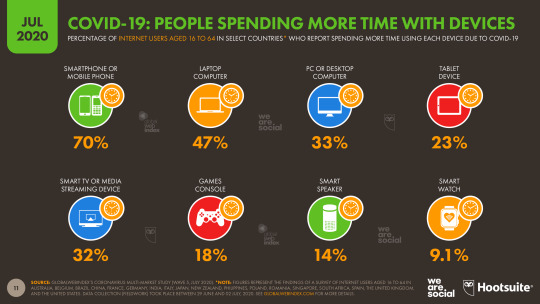
© GlobalWebIndex / Hootsuite / We Are Social
Between Zoom calls, smartphone scrolling, working on a laptop, binging Netflix, repetitive tasks, adaptation to new circumstances and unusual social occurrences, any given lockdown day was liable to speed up or slow down by the hour; further assembling into weeks, which would slip through our fingers or linger indefinitely. Disorientating, yes, but also a valuable reminder that our perception of time is subjective, and therefore something we have a degree of control over.
Take Your Time
While compliance with the clock helps us interact with others and make a living, we should be wary of allowing it too great an influence over how we enjoy or endure our experiences. Frustration from waiting, pressure from deadlines, habitually arriving late or early — all these arise from the way we process time. Finding ways to free yourself from its yoke can be useful, not only in an uncertain era where another challenging lockdown might be just around the corner, but also as we return to more conventional ways of living. A warped perception of time — whether too fast or slow — has been linked to stress, anxiety and depression. Insulating yourself from a fluctuating perception of time serves towards a consistent mental state.
In practical terms, it helps to do any fulfilling or challenging activity with no incantation of time attached: distance yourself from technology, wander aimlessly outdoors, read from a page rather than a screen, thin out your schedule, study something new, write down your thoughts. When you cannot control your activities, mindfulness has been shown to help. Focussing on the present moment hypothetically minimises stimulation of your internal pacemaker; slowing your sense of time and allowing you to relax into whatever you find yourself doing.
Whatever your circumstances or interests, the key is to take your time, to the fullest extent possible. Take life at your own pace, whatever that might be. Avoid the agitation of scoring life based on time achieved or missed. Wind your own clock and be sensitive to what makes it tick. As an ex-stopwatch jockey, I attest to its benefits.
youtube
0 notes
Text
Nina Simone, Duende & Pastel Blues
Nina Simone’s Pastel Blues is a true embodiment of duende — the rare depth and darkness that impels her work.

1969 © Jack Robinson / Hulton Archive
Her distinctive warble permeates thousands of movie soundtracks, hip hop samples and advertisements, let alone the countless personal moments by which people demarcate their lives. This omnipresence allows us to forget who Nina Simone was, and the outright value of her music. For the streaming generation, knowledge of such an artist is limited to “top hits”; on some Spotify, Sunday Mood playlist. Or worse, the songs will only wriggle into the brain from various attempts to sell Coca-Cola, Seat Atecas, Renault Clios, Volvo XC90s, Fords, Apple Watches, Chanel №5, Warehouse discount clothes, Virgin Flights, HTC Phones, Jockey underwear and Behr Paint.
Most egregious among these is the Muller Light yoghurt advert, inescapable for anyone sentient in early 2000s UK. It uses her 1968 song I Ain’t Got No, I Got Life, but only the second, I Got Life half; carving it off entirely from its I Ain’t Got No essence. In its truncated form, the song sounds like a free-wheeling celebration of life and limb: Got my hair, got my head / Got my brains, got my ears / Got my eyes, got my nose / Got my mouth, I got my smile. Yet the missing section is a lengthy condemnation of segregated American society, where disenfranchised black people had been given nothing to cling to: Ain’t got no mother, ain’t got no culture / Ain’t got no friends, ain’t got no schoolin’ / Ain’t got no love, ain’t got no name /…Ain’t got no god / Hey, what have I got? / Why am I alive, anyway?
Yes, the song contains positivity in tune and verse, but stripping the darkness from Simone’s work also strips away its incandescent light. It would be like taking Rodin’s Gates of Hell and shrouding everything except the seemingly peaceful thinker at the centre; or cutting the lightbulb from the top of Picasso’s Guernica and presenting it as a bright, merry, representative segment. Or a millionaire DJ taking Martin Luther King’s I Have a Dream Speech and turning it into a dance track during race protests and a global pandemic. But surely not even David Guetta would do that.
The reduction of such a deliberate and profound artist to commercialised snippets is saddening. In Simone’s case this is particularly true because of the highly unusual, powerful darkness that clutches her music. She has something rare. In Spanish, it is known as duende.
Duende
Rooted in Iberian cultures, duende derives from “duen de casa”, meaning “possessor of a house”. Originally the superstition of a dark, goblin-like spirit, it is now the concept of impassioned, death-endorsing, creative invention; typically associated with the performative aspects of Flamenco. In that context, poet and playwright Federico García Lorca describes its contemporary meaning (in his 1933 Buenos Aries lecture, Theory and Play of the Duende), as the “buried spirit of saddened Spain”.
As a guitar maestro explained to him, “the duende is not in the throat: the duende surges up, inside, from the soles of the feet”. Lorca quotes others, one, after listening to Paganini’s violin, identified it as, “a mysterious force that everyone feels and no philosopher has explained”; or another, upon hearing Manuel de Falla perform Nocturno, proposed that, “all that has dark sounds has duende”. In Lorca’s own words:
For every man, every artist called Nietzsche or Cézanne, every step that he climbs in the tower of his perfection is at the expense of the struggle that he undergoes with his duende. Not with an angel, as is often said, nor with his Muse…
…With idea, sound, gesture, the duende delights in struggling freely with the creator on the edge of the pit. Angel and Muse flee, with violin and compasses, and the duende wounds, and in trying to heal that wound that never heals, lies the strangeness, the inventiveness of a man’s work.
Nina Simone embodies duende.

1968 © Hulton Archive
It exists not only within her more explicit protest songs, born of the Civil Rights movement, but is present in everything she did — a ferocity, fragility, sadness and authenticity that claws its way up her throat and flings itself from her open mouth. It’s an otherworldly channelling of something very few can access, but which audiences pray to feel. With music so steeped in darkness, using it to gleefully sell products is a comedy — a joke on the shamelessness naivety of consumers and marketeers — as well as a tragedy.
A Brief History
Born Eunice Kathleen Waymon in 1933 and raised in Jim Crow-era North Carolina, Simone was ambitiously desirous of becoming a concert pianist — an uncommon career path for a young black girl at the time. Despite obtaining the ability to do so, she was instead funnelled into performing a mixture of jazz, gospel, soul and folk. And blues, in every shade. Her voice — ostensibly untrained — was burnished in the fire of necessity: if she wanted to earn money in the clubs, she had to sing as well as play piano. She electrified audiences, but remained persistently dissatisfied with how she was received and perceived:
It’s only normal to want acceptance from one’s own country for one’s gifts God has given you. I’m tired of begging for it. It took me 20 years of playing in clubs, in nightclubs, on the concert stage doing all these records to get a decent, real accurate review of my gifts by the New York Times… It was the first time I had been compared to Maria Callas as a diva. All before that I had been labelled a jazz singer, a blues singer, High Priestess of Soul, which… I am not sure what that is. I have studied piano 18 years! So yes I’m tired. I’m too old to keep asking for love from the industry. (Nina Simone, 1984)
Elevated by activists and aficionados alike, yet shunned by the industry at the height of her popularity after vigorously speaking out for black rights (see: Mississippi Goddam), she evolved as an artist in parallel with the revolution of television; first appearing in grainy monochrome and then in saturated technicolour. In the 12-year period between 1959 and 1971, she released 16 studio albums. In the years that followed, before her death in 2003, she released just four more.
Pastel Blues
These days, the idea of albums is virtually defunct, Drakefied to an incoherent heap of songs occasionally “dropped” like laundry, to be worn or discarded at the listeners behest. But as with other great artists, if the extent of Simone’s depth and duende is to be appreciated, it is essential to listen to her albums — the home of her authorship.
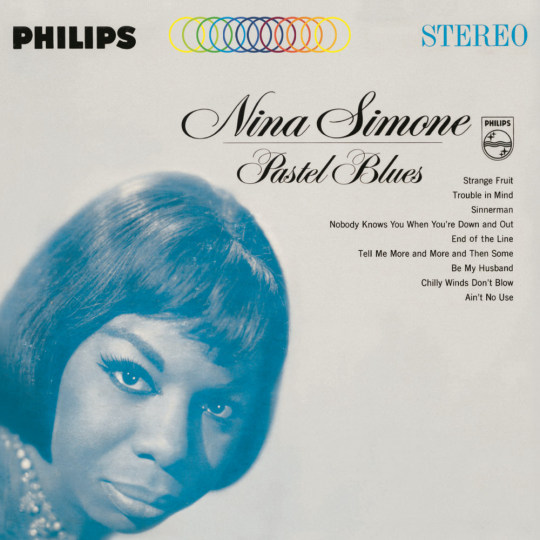
Pastel Blues is a nine track, 36-minute LP, mainly of covers and blues standards. It was released in October 1965, eight months after Malcolm X was assassinated, seven months after Bloody Sunday in Selma, and two months after the Voting Rights Act became law. Arguably, it arrived at the height of the movement. Nina Simone was 32. Just imagine.
Although the title suggests something soft and light, underneath the label, the substance is preternatural. As you listen, watch the image on the cover transform from a gentle gaze into a pointed glare; a stare in stereo. Altogether, it is a marvellous enunciation of Nina Simone’s darkness, with which she writhed in body, mind, and soul to give us some of the most memorable artworks of the 20th century. Pastel Blues gives her duende its due.
Listen to Pastel Blues on Apple Music
Listen to Pastel Blues on Spotify (1965 Live Version)
Listen to Pastel Blues on YouTube
Track-By-Track
Be My Husband
It opens with Be My Husband, featuring lyrics incidentally written by Simone’s own husband (and manager), Andrew Stroud. Slightly off-kilter, echoey, four-beat stamping and clapping, heightened by the tight splash of a high-hat, introduces a languid, yet driving pace. With purity of purpose, Simone’s voice drawls intensely into her opening repeated demand: Be my husband and I’ll be your wife / Love and honour you the rest of your life.
It suggests a woman pleading for the hand of her lover, committing to do all he would expect of a wife: If you want me to cook and sew / Outside of you there is no place to go. In return, she asks him only to curb his wandering eye: Stick the promise man you made me / That you stay away from Rosalie, yeah. This is presumably the intended (somewhat biased) perspective of the lyricist. But the way Simone sings it, with improvised shrieks dropping into deep, bassy groans, something quite different is suggested.
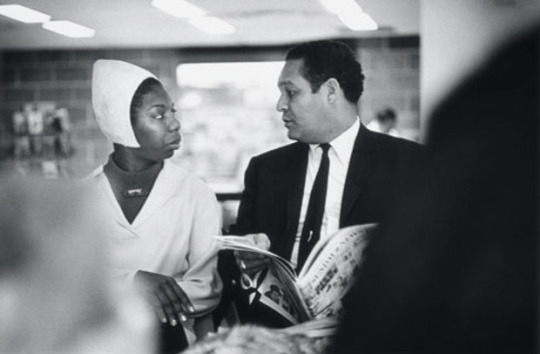
Nina Simone & Andrew Stroud, photographer unknown.
At this point, Simone was four years into an emotionally and physically abusive marriage with Stroud. Knowing this, it has far more resonance to picture her in a kitchen, staring down a boorish, unsatisfactory, and unsatisfying man; stomping on a linoleum floor, and throwing him a powerful, sacred ultimatum — give me what you promised. To imagine it otherwise is to imagine how Ed Sheeran might perform it — with the frivolousness of a millennial wedding on a sunny day in Surrey, and all the stamping, clapping vigour of a gaggle of giggling, inebriated aunts.
Furthermore, Be My Husband is effectively a re-worked chain gang song from the segregated south — a version of Rosie by the Inmates of Parchman Farm Penitentiary recorded in 1947 Mississippi by ethnomusicologist, Alan Lomax (and notoriously sampled by… well, well, well… hello again, David Guetta). The original lyrics ring out: Be my woman, gal, I’ll be your man… Stick to the promise girl that you made me / Won’t got married til’ I go free. Even aside from Simone’s interpretation, its genesis as a song of imprisonment immediately gives it a grimmer tone.
Nobody Knows You When You’re Down and Out
As it bows to track two, Nobody Knows You When You’re Down and Out, the heavy opening of the album is extended. A blues standard written in 1923, it was popularised by Bessie Smith’s 1929 recording and re-introduced to a new audience by Eric Clapton, who performed it throughout his career. Sam Cooke, Otis Reading, Janis Joplin, Bobby Womack, John Lennon, Derek and the Dominos and Duane & Gregg Allman all put their spin on it, with wildly varying degrees of quality, duende and notoriety.
It begins deceptively upbeat: Well once I lived the life of a millionaire / spending my money I didn’t care / Taking my friends out for a mighty good time. Simone’s version is no different as she lightly pads major key piano chords, but what immediately sets her rendition apart is the tremble in her voice. It sounds like she is singing through tears, not least when the song reaches its sobering bridge: Nobody wants you / Nobody needs you.
In Simone’s case, the song became painfully prescient. Following her fall from grace within the music industry, she left for Barbados in 1970, where she had an affair with then Prime Minister, Errol Barrow. Her subsequent divorce from Stroud limited access to her income, which he, as her manager, controlled. Also, due to an arrest warrant for taxes she withheld in protest at the Vietnam War, Simone was unable to return to the US, so ended up first in Liberia, then living across Europe. With little money to live from and few relationships to speak of, for a time, she came to epitomise the song.
End of the Line
The first fully original song on the album, End of the Line is initially carried by another deception of positiveness, this time through its melody; romantic and light despite the lyrics: This is the end of the line / I’ve clearly read every sign / The way you glance at me / Indifferently / And take your hand from mine. Such is the flowing nostalgia of the tune, it is plausible to imagine the same song with all words made positive (e.g. The way you glance at me / So happily / And place your hand in mine).
Divisible into two parts, the first has the feel of Simone sipping a martini in a Rogers & Hammerstein bar (perhaps offering some musical theatrical hope of salvation). The second, however, gives way to resigned sorrow, over a steady, rumba beat. Aside from showcasing Simone’s prodigious classical piano-playing ability — albeit only through twinkling, floral runs — the richness of her vocal tone spills forth, smoothly and lusciously, particularly in the second half. While lyrically it lacks the forcefulness of other tracks, its simplicity opens the door to Simone’s abundant musicality.
Trouble in Mind
Written in 1924, Trouble in Mind is another blues standard, but given its title, after three tracks of despair, it surprisingly brings a degree of levity.
The original lyrics (as sung by Dinah Washington, Janis Joplin, Jerry Lee Lewis, Ella Fitzgerald, Marianne Faithful, Johnny Cash and original recording artist Thelma La Vizzo) are far darker than this version. Typically, the singer, wrestling with the irrepressible demons of their psyche, contemplates suicide by train: I’m gonna lay my head / On some lonesome railroad line / Let the 2:19 train / Ease my troubled mind. Yet on Pastel Blues, it never gets that far.
While refrain of the song always concludes: I won’t be blue always / ‘Cause the sun’s gonna shine in my back door someday, Simone’s version leans more heavily on those lyrics than others’ versions; giving it a more hopeful perspective. She also dresses the music with a quicker, cheerier pace. Furthermore, instead of seeking the certainty and finality of a gruesome suicide, she resolves only that: I’m going down to the river / Gonna get me a rocking chair / If the Lord don’t help me / I’m gonna rock away from here.
Given she was be known to perform the full lyrics on other occasions, it is an interesting choice to uplift them on Pastel Blues. In terms of the album’s full narrative, however, it makes sense to offer a moment of optimism, keeping us on an undulating journey of emotion, rather than wallowing solely in melancholy.
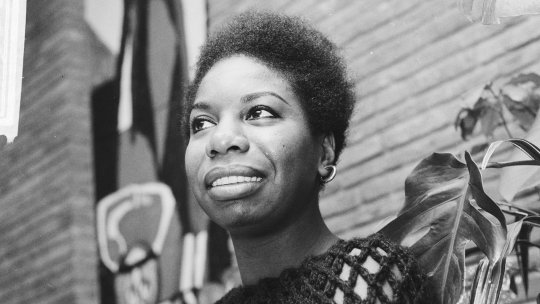
© Ron Kroon
Tell Me More and More and Then Some
The dynamic changes once again in Tell Me More and More and Then Some, as Simone hints towards her unapologetic, simmering, sexuality. Sex is known to have often enthralled her — as she wrote in her diary, “My attitude toward sex was that we should be having it all the time.���
Originally recorded in 1940 by Billie Holiday, Simone tweaks the lyrics to make the titular line more demanding, more desirous: I want more, more and then some. Accompanied by quivering, raunchy harmonica and clanging, insistent piano chords, Simone’s phrasing and emphasis draws lustfulness from the lyrics: You know how I love that stuff / Whisper from now on / To doomsday / But I never no no no no, ooh / I never, no I never, will get enough. It’s an erotic elaboration on Holiday’s already sultry interpretation, loading the request for whispered sweet nothings with a throbbing, sexual overtone.
Chilly Winds Don’t Blow
Chilly Winds Don’t Blow acts as a natural, also largely optimistic companion to Trouble in Mind, making Tell Me More and More and Then Some the bawdy, thick-cut meat between two, forward-looking slices of bread. That said, the song was previously released by Simone as single in 1959, as an even more upbeat spiritual, with denser orchestration and less of her signature vocal style.
On Pastel Blues, however, it is likely sung from a position of matured disappointment towards the unending hostility experienced by black Americans. With a sparser arrangement and greater vocal freedom, the new context is pointedly conveyed: There will be red roses round my door / I’m going where they’ll welcome me for sure, oh baby / Where the chilly winds, they don’t blow. Notably, as her piano rumbles, mimicking the sound of a rolling, cold wind, Simone also refers to her own maturity, as a woman. In this new version, she no longer wants to go where her father waits for her. Instead, it’s her daddy who will be waiting.
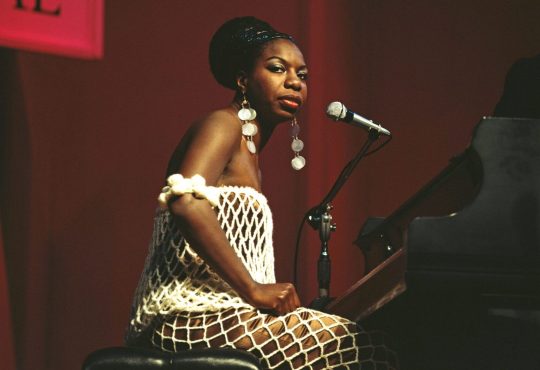
1968 © David Redfern
Ain’t No Use
Recorded in 1959 by Joe Williams and Count Basie, Ain’t No Use manifested as a break-up song. In that bright, brassy version, Williams croons at the opening: Ain’t no use of hanging round / Ain’t no use I put you down / There’s no love left / In my heart for you. In Simone’s rendition, the subject of the warning is much more ambiguous. When considered alongside Chilly Winds Don’t Blow and the tracks that follow, Simone instead implies a sense of exasperation, perhaps a desire to withdraw from broken American society, or the increasingly hostile music industry. She opens not with fallen love but accusation and fatigue: Ain’t no use baby / I’m leaving the scene / Ain’t no use baby / You’re too doggone mean / Yes I’m tired of paying dues / Having the blues / Hitting bad news.
To this point, Pastel Blues is a solid, often special, blues album, but here it really begins to soar; marking it apart. The underlying anguish of the blues is of course ingrained in the genre, but with Simone, her duende, fraught personal life, and civil rights activism, a dramatic narrative acceleration begins to emerge in the gap between Ain’t No Use and Strange Fruit (and again between Strange Fruit and Sinnerman). Without realising, tracks one to eight have been quietly coaxing you towards the edge of a cliff. The final two rip through you, forcing you over the edge before you can pull back. Amidst the silence between the songs, everything that preceded becomes re-contextualised with a deeper, darker tone. Embrace the fall.
Strange Fruit
The majesty of Strange Fruit is well documented — in 1999, Time named it the best song of the century. It was written by Abel Meeropol — a white, Jewish sometime Communist, and real-life MacGuffin, who intersects with numerous historically important features of 20th century America, but never appears at their forefront.
As a student and then teacher at Dewitt Clinton High School in the Bronx, he crossed paths with a young James Baldwin and numerous other luminaries of American culture. After seeing a photograph of a lynching, he felt compelled to write; originally penning the words as an anti-lynching poem. Published in a teacher’s union publication, it concisely described the horror he had seen through the sinister metaphor of a seemingly innocuous fruit tree. He later set it to music and presented it to Billie Holiday, who recorded her socially and sonically remarkable version in 1937. In 1945, he gave up teaching to become a full-time songwriter under the pen name Lewis Allen (the first names of his two, tragically stillborn sons), most famously writing Frank Sinatra’s Oscar winning, patriotic short film and accompanying song, The House I Live in. Not only that, but in 1953 he adopted the two sons of Julius and Ethel Rosenberg — a Jewish couple famously executed for spying on America for the Soviet Union.
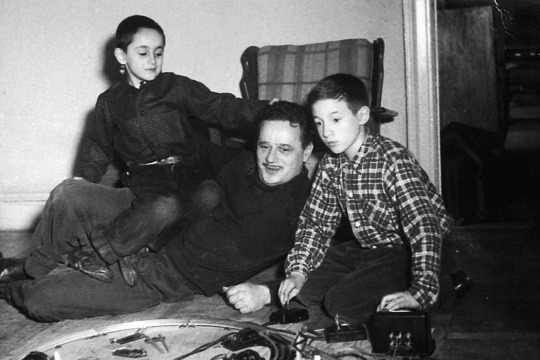
Abel Meeropol with sons Michael and Robert Meeropol in 1954, via Robert Meeropol
As for the song itself, if Holiday’s recording is classical — a regretful, tender jazz lament — Simone’s is something more modern, more openly enraged; a cutting, resonant howl; transcending genre. The arrangement is minimal and masterful at once, with often dissonant piano chords treading like distressed steps through fallen leaves towards the horrifying tree at the agonising conclusion. It climaxes with a literal wail as the end nears: Here is a fruit for the crows to pluck / For the rain to gather, for the wind to suck / For the sun to rot, for the trees to drop / Here is a strange and bitter crop.
Its intensity lent itself perfectly to the sample on Kanye West’s scorching rebuke of destructive celebrity relationships, Blood On the Leaves.
Sinnerman
Simone’s Sinnerman is virtually unrecognisable from the first, folky version recorded by the Les Baxter Orchestra in 1956. Baxter adapted (read: plagiarised) the song from On the Judgement Day, by the Sensational Nightingales, which in turn takes elements from the 1924 No Hiding Place Down Here, by the Old South Quartette. But much like Jeff Buckley’s version of Leonard Cohen’s similarly spiritual Hallelujah, Simone’s version remains, and will forever remain, the definitive iteration; the most copied, covered, celebrated and recognised; never bettered beyond that point.
As her Sinnerman evolves, it reveals the preceding short, eight tracks to have been little more than an (excellent) overture to this — the epic, operatic finale. At ten and a half minutes, it makes up nearly a third of the entire album. Brace yourself.
After the silent gap following Strange Fruit — another inhale between urgent roars — the first few bars are timeless, perhaps some of the most familiar notes ever recorded. Piano keys clamber over one another, skipping like a broken record. A foot taps out a light beat in the background. The percussion joins: a double-time, racing, hi-hat heart rate, yielding only to the occasional heavy, melodious thump of a double bass. Simone enters, Oh, Sinnerman, where you gonna run to? / Sinnerman, where you gonna run to?
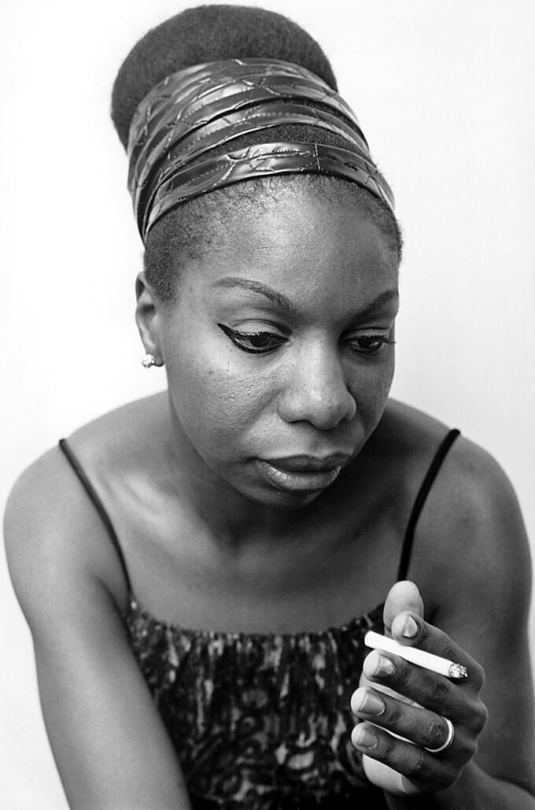
1967 © Tony Gale
After Strange Fruit, the question takes on new meaning. Picture Simone in a deep purple Cadillac Deville n hot pursuit of a fleeing lynch mob; hood down, foot down, brow furrowed, engine roaring, steering on the edge of control. This toying with tumbling gives the song its energy. Like running down a steep slope, with the slightest misstep, all would be lost. As the beats impatiently trip over the piano notes, it feels like it’s constantly accelerating; never settling into a regimented pace.
After erupting into a minute-long call and response of: Power!, Sinnerman changes gear. A jangling, twanging guitar breathes heavily in contemplation of the next charge. The music fades, leaving only intimidating clapping, until the piano returns most wonderfully with a couple of pleasingly apparent (yet well-intended) mistakes; three or four notes missed, misplaced, or hesitated over as the tune searches again for its order among the tumult. When found, it resurges with renewed purpose; Simone audibly hyperventilating in anxious anticipation: So I run to the river, it was boiling / I run to the sea, it was boiling / All on that day. Judgement Day has arrived, and the devil is everywhere.
(Should this masterpiece really ever be used to sell hatchbacks?)
It ends with a pleading prayer, agitated piano chords and chaotic drums: Don’t you know, I need you Lord?, Simone cries. Whether the prayer is answered, we’ll never know, but as the percussion takes over and batters us into a final, frenzied submission, it feels too late.
Exhausted and exhilarated, Pastel Blues is at its end. But within it, Nina Simone’s duende forever persists.
4 notes
·
View notes
Text
Digitisation & Fulfilment in Photography
Why film is the solution to diminishing human involvement in the photographic process.
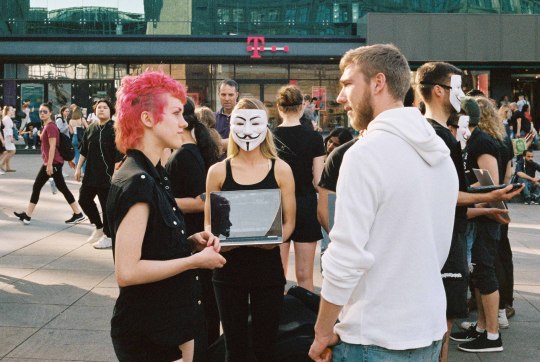
Berlin © Neal Gruer
All forms of digitisation have the effect, and typically the intention, of reducing “imperfection”. Audible highs and lows are shaved off music by MP3s; ultra-HD televisions output more detail than is perceptible by the human eye; Google Maps eradicates the risk of getting lost; AI assistants inform us of what we “need” before we even know we “need” it. In a world of commercial, capitalist pressure, people pay grand sums for exactitude, or at least its illusion. Money chooses precise outcomes over uncertain processes.
Fundamentally, human beings are analogue creatures. We don’t click; we flow. We are imbued with imperfection. No body or mind is born without idiosyncratic “flaws”, big and small. Given this fact, our insistence on increasingly digitising our lives is simultaneously understandable and ironic. It’s understandable, because perfection is seen as the ultimate accomplishment – unattainable, but worth pursuing. It’s ironic for the same reason – perfection’s unattainability makes it a falsehood; a non-existent, abstract concept so often based on fear – of inadequacy, pain, solitude or mortality.
While digitisation touches all aspects of life, nothing has succumbed more than photography. Unlike other artistic processes, it’s an extremely new and still developing form of creative expression. After the first recorded photograph in the early 1800s, it took over a century to be accepted as an art form, giving it an epochal blink of an eye to establish itself before the digital revolution arrived to completely upend its upbringing.
Despite all the technological advances, it remains the case that, as humans, the more we use our body and mind in unison to skilfully perform a challenging act, the more we can gain. Digitisation may have given us convenience, but in doing so, it has increasingly stripped human involvement from the process of taking photographs. This diminishes its huge potential to be fulfilling and meaningful, both to the photographer and as an art form. To maintain photography’s value, manual photography – most naturally performed on decades-old, mechanical film cameras – is essential.
Digital v Film
Undoubtedly, digital photography is inherently more versatile than film. Part of this comes from the ability to significantly and easily alter an image long after it was taken, but so much comes from the electronic power and computational assistance of the camera itself – autofocus, auto lens stabilization, auto (and very high) sensitivity to light (ISO), auto-metering, auto-this, auto-that, auto-everything you like. Add to this the immense storage capacity of a single memory card and a photographer needs to do little more than point the camera and press the button.
The insatiable argument is that by removing technical concerns a photographer can simply focus on getting the shot; thinking only about what should be in the image, not worrying about how to capture it. Naturally, therefore, when the concern is more about outcome than process, or cost than creativity, an automated, digital camera is extremely persuasive, substantially increasing certainty over the final result.
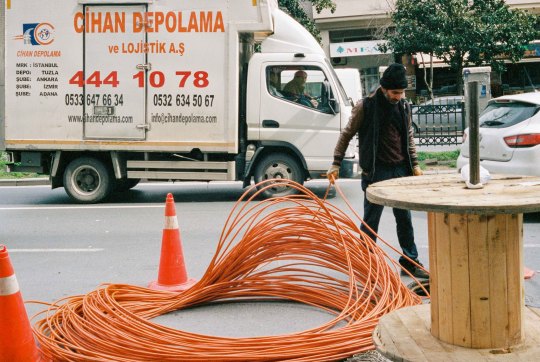
Istanbul © Neal Gruer
In comparison, a manual film camera is innately imprecise. Each of the user’s physical motions have an effect – a click to change the aperture, a swift turn of the shutter speed dial, a swoosh of the focussing ring. Even twitching or breathing can have a noticeable impact. A photographer must devise an image in their mind then, through the physicality of the camera, swiftly implement it with their own hands, aided by just a few basic mechanics. Even without accidentally exposing the film to light or damaging the film in the process of development, imperfections are inevitable in the pictures themselves. Yet they emanate feeling, character and humanity: a tender crumbling of the visible spectrum into tiny molecules, ecstatically reuniting under a chemistry bath to form expressive shapes and tones.
The contrast aligns with the contemporary social debate of equality of outcome versus equality of opportunity. An automated, intelligent digital camera offers equality of outcome – so much is done by the machine that it will help even the most unskilled user to produce a technically decent image. On the other hand, a manual, analogue camera offers everybody the same opportunity to take a picture – a passive tool reliant entirely on the user’s capability for it to work.
Hands Stimulate the Mind
Obstinate socio-political debates aside, the precipitous increase in automated photography (commensurate with steeply decreasing human involvement in picture-taking) dramatically changes photography’s capacity to be fulfilling for the photographer. There is a deep connection between what we do with our hands and how we learn, remember and interpret information. A useful hypothetical comparator is handwriting. Numerous studies have identified its cognitive benefits. In one such study, writing notes in a lecture was found to be advantageous over typing:
…even when laptops are used solely to take notes [without the variables of multitasking and distraction], they may still be impairing learning because their use results in shallower processing. In three studies, we found that students who took notes on laptops performed worse on conceptual questions than students who took notes longhand.
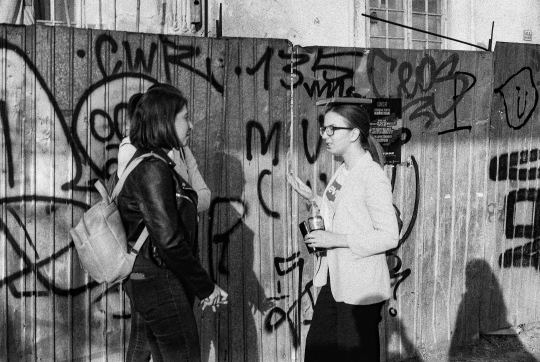
Bucharest © Neal Gruer
Further studies reinforce the stimulating connection between hand and brain: children pick up comprehension of letters much quicker when writing by hand; and as they get older, idea generation is better performed by those with good handwriting:
…good writers activated more than poor writers in brain regions associated with cognition, language, and executive functions… and also in working memory, motor planning, and timing.
These studies not only demonstrate the logical connection between body function and brain stimulation, but also digital devices’ ability to sever that connection. In photography, studies have frequently shown a negative impact on memory when smartphone cameras are used to document an experience – worse than if no photos were taken at all. It is often surmised that simply “taking photos” causes this problem, but deeper studies show that even a small physical act, such as zooming-in on a detail improves the photo-taker’s memory, not only of that detail, but of the entire subject:
…the additional attentional and cognitive processes engaged by [zooming in] can eliminate the photo-taking-impairment effect [on memory].
If this is indeed the case, it follows that cerebral stimulation will be increased if more “attentional and cognitive” processes are utilised while taking a photograph. Manual photography, with its many levels of advance preparation and in-the-moment activity, offers this in spades.
Additionally, with the need to stop and wind forwards a roll of film after every shot, and a typical limit of 37 shots per roll, a manual film photographer’s speed is limited. As per the note-taking study mentioned above, this is analogous to the speed limitations of handwriting, where the imposed, slower process is a determining factor in increasing the qualitative usefulness of notes taken, both mentally and on the page.
Admittedly, this type of “attentional cognitive” photography can still, to some extent, be achieved with digital cameras – turn off the screen, put everything on manual and fire away. Equally, film cameras are not universally manual - many feature extensive automation. But the greatest advantage is still to be had from a mechanical, manual film camera. Unlike digital cameras, which encourage use of their computational power and speed at every turn, manual film cameras were born basic; designed to yield to the bearer, relentlessly and without remorse.
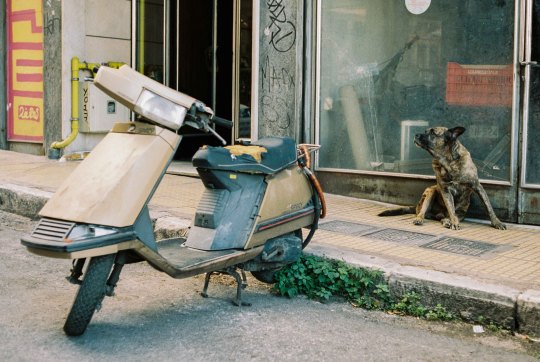
Athens © Neal Gruer
Technology & Zero Human Involvement
Furthermore, accepting digitisation in photography becomes a slippery slope. With every incremental improvement, every subtle innovation, human involvement gets closer to being removed entirely.
Take Arsenal, for example. It’s a small, Kickstarter-funded piece of tech, designed for landscape photographers. Affixed to a digital camera, it functions as follows:
Arsenal quickly examines the scene. It uses image recognition to identify environment and subject-specific needs (e.g. fast shutter for birds or camera vibration).
Arsenal then finds great settings by comparing the current scene with thousands of professional photos using a convolutional deep neural network.
Lastly, Arsenal optimizes settings based on 18 different factors, like hyperfocal distance, sensor dynamic range and lens transmission.
Arsenal lets you control your camera from up to 100 feet away. Use the smart assistant AI, set the shutter speed, aperture, and ISO, see a live preview, or trigger the shutter from your smartphone.
In summary, you put your camera in front of a scene and with Arsenal attached, stand 30 meters away and let it take “perfect” photos. 15,766 backers pledged $2,650,310 to help bring this project to life. It is popular.
If anything marks the impending death of human involvement in photography (and widespread enthusiasm for its euthanasia) it is Arsenal. What could be more lustful for a pre-determined outcome than a computer using a convolutional deep neural network to decide everything about how a photograph should be taken. While the photographer still needs to choose the subject, it would only be logical for an updated version of Arsenal to propose exactly where and how the camera should be positioned. Human involvement reduced to propping up a machine and following its instructions.
Taken further, how long before we simply attach a camera to a drone and send it on its merry way? It flies around until finding the AI-determined “best” scene; hovers there until the “best” light appears; takes the “best” photograph (based on an analysis of every landscape photograph ever taken); uploads the “best” shots to the cloud for analysis and selection, then flies back to its charging station. Human involvement reduced to zero. Which brings us neatly to the biggest culprit of photographic digitisation. The ubiquitous smartphone.
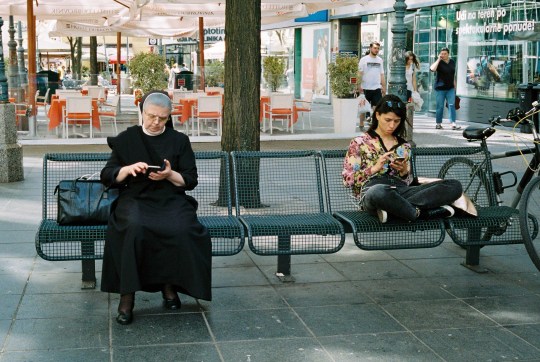
Zagreb © Neal Gruer
New smartphones now come with at least two lenses on the back, and many with three or four. This provides multiple data points to the camera software, making the final image appear as if it had been taken by more advanced equipment. In particular, “Portrait Mode” applies a concert of AI measures to an image – smoothing skin, blurring the background, altering lighting and contrast – giving the impression it was taken in a studio. Currently, the software is still young enough to give noticeably flawed results, but it is quickly and vastly improving. Soon, simply pointing a phone towards a person will be sufficient for a “perfect” portrait photograph to be taken. Everything will be done by software. Even pressing a button will be unnecessary.
It’s already begun. Since the Pixel 3 was released in 2018, Google phones can now:
…analyse photos and pick the best shots in a given batch. With Top Shot, you’ll be able to capture a number of photos before and after the moment you press the virtual shutter button, while the software will pick out the best shot.
And the “Photobooth” feature automatically:
…takes a bunch of photos of you or your friends, but only when it recognizes that the subjects of the photo are making a funny face or smiling. You don’t need to even press the shutter.
These innovations and their kin stem from a desire for perfect, effortless outcomes. In turning attention from the digital process to its outcomes, at what point is human involvement so diminished that the idea of “art” evaporates?
Importance of the Artistic Process
Considering most artworks never gain a wide audience (or any audience at all), art’s true essence must lie in the process undertaken by the artist, rather than a beholder’s observation of the completed artwork. If human involvement decreases in the process of making art, the artist is denied the opportunity for maximal human experience. Consequently, their artworks are denied the maximum potential expression of what it means to be human, making them spiritually and philosophically less valuable.
Without human involvement in art, images, books and sounds become isolated functional commodities, designed only for the satisfaction of their consumption. Over time, the compounding effect will be the reduction of organic creativity – ideas become algorithmicised, filtered, perfected, narrowed and dehumanised; existing only to be marketed and sold for titillation and satiation.
When it comes to photography, given its literal manner of representing exactly how a subject appears, siphoning off the photographer’s involvement eradicates much of what differentiates one image from the next; its artistic potency. It is the difference between a sculptor using a hammer and chisel versus a 3D printer; a painter using a brush and oils versus an iPad; a drummer striking skins versus tapping buttons on a drum machine; or a student taking notes by writing versus typing. The weight of responsibility rests with a flesh and blood person, wrestling with the rules of physics, biology, chemistry, and their own consciousness, presented by a vast universe we are barely able to comprehend; unlimited by the confines of a semi-intelligent machine with rules created by another human being.
Yes, digital cameras can still be used with huge amounts of human involvement, but using a mechanical, manual film camera, entirely dependent on human involvement, offers the purest potential for fulfilment, and therefore, artistry. It forces contemplation, understanding and foresight before the act of photographing; decisiveness during; and humble acceptance afterwards. Amidst the ongoing acceleration in digitisation, film is still the best photographic method for engaging our humanity and creating from our core. In return, tremendous joy and fulfilment awaits.
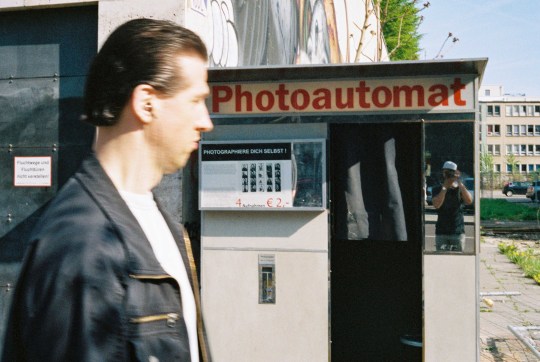
Berlin © Neal Gruer
All photographs taken by Neal Gruer on 35mm film. Visit nealgruerphotography.com for more.
#photography#film photography#35mm film#35mm photography#wellbeing#mindfulness#digitisation#digital photography#technology#art#smartphones#analogue#analog
0 notes
Text
Watchmen, Anchors & This Extraordinary Being
As anchor episodes go, what makes Watchmen’s This Extraordinary Being so… Extraordinary? Beside the rest, it’s a masterclass of meta.

© HBO
In its entirety, HBO’s Watchmen is deserving of tremendous praise: “woke” without patronising, intellectual without pomposity, indulgent without narcissism, complex without confusing. Its best trick is to make the fanciful believable, laying on just enough familiarity and pseudo-science to imagine we really could be watching a parallel version of our own reality. Many of the ideas originated from its source material — Alan Moore’s seminal 1980s graphic novel of the same name. But successfully adapting, updating and elaborating on those ideas is no simple task, notwithstanding the presence of showrunner Damien Lindelof, and his history of intricate storytelling (Lost, The Leftovers, Prometheus, Tomorrowland).
The series follows Vietnam-born Angela Abar (Regina King, If Beale Street Could Talk) as Sister Night — a highly-skilled police officer in Tulsa, Oklahoma. Masked vigilantes are outlawed, but several are now openly integrated into the police force. Ironically, all Tulsan police officers now wear masks to hide their identities — a reaction to a white supremacist terrorist attack on officers in their homes, several years earlier. The KKK-like “7th Cavalry” responsible for the attack were forced underground, but have re-emerged, threatening to re-boot their police-killing operation. Dr Manhattan, a blue, atomic, god-like super-human has long-since disappeared to reside on Mars, and (oh yeah) the world appears to be in occasional overlap with a portal to another, squid-filled dimension.

© HBO
If you are familiar with previous iterations of Watchmen (either from the novel or Zack Snyder’s 2009 movie), you’ll recognise some of these elements and be unacquainted with others. Set 34 years after the novel, the surviving characters have evolved in tandem with their invented surroundings. Given George Floyd’s recent death and the recent focus on Tulsa (via Trump’s floppy rally and heightened awareness of Juneteenth), the intersection of the setting, white supremacy and policing makes this version unavoidably topical. Beyond that, the original thematic similarities are maintained — what if superheroes (with the notable, dick-swinging exception of Dr Manhattan) were just exceptional people, without supernatural powers, but with typical human flaws? What if there had been a different chain of presidents and major events in the latter 20th century? What if we better understood quantum physics and could put it to use?
Does Your Anchor Hold?
Every season of novelistic, modern TV has that episode, anchoring the entire show. In a typical 8–12-episode affair, it tends to appear around two-thirds of the way through. In a good show, it allows the other episodes to tread lightly on otherwise clunky exposition and foreshadowing, resolving unanswered questions from the first two acts, while constructing intrigue for the third. In a great show, it will go further, offering up an ambitious concept with cinematic exposition and efficient storytelling. It can virtually stand alone — a piece of poetry amidst a wealth of narrative, specifically memorable beyond the whole.
Often it is played out in a context outside the conventional environment or characters of the show. At its best, it can even make the finale seem underwhelming (which, despite our natural (perhaps biological) craving for a climax to signal a conclusion, is no bad thing). On the other hand, it can just as easily go underrated, without the major twists or revelations offered elsewhere.

© HBO
It’s the cradle into which the show’s fundamental ideas are birthed. For everything to work, it’s the point the show needs to reach. The list is increasingly extensive, but a few examples, recent and historic, are listed at the end of this article.
Joining the anchor pantheon is Watchmen’s Episode 6 — This Extraordinary Being; a significant reason for the show’s recent 26 Emmy nominations. The episode itself is up for 8 categories: direction, writing, cinematography, original music, picture editing, sound editing, sound mixing AND supporting actor (Jovan Adepo; Fences, When They See Us). Wowzers.
WARNING: DEPENDING ON YOUR TOLLERANCE LEVELS, WHAT FOLLOWS POTENTIALLY CONTAINS (LIGHT) SPOILERS. YOU COULD PROBABLY READ IT ALL BEFORE WATCHING THE EPISODE WITHOUT ANY MAJOR HOO-HA, BUT IF YOU LIKE TO GO INTO EPISODES COMPLETELY BLIND — I FEEL YOU. JUST SKIP TO THE LAST PARAGRAGH, NO HARD FEELINGS. WHEN YOU’VE WATCHED THE SHOW, COME BACK AND GET FILLED IN.
This Extraordinary Episode
As anchors go, what makes This Extraordinary Being so… Extraordinary? Well, in addition to drawing the story threads together and answering a wealth of pent-up questions, it’s a masterclass of meta. A meta Beretta. A meta Matryoshka. A full meta jacket.

© HBO
It opens with a big storyline reveal on “An American Hero” — a fake, popular TV show within Watchmen, which portrays a fictionalised (and inaccurate) version of the (also) fictional story we ourselves are watching unveil. Phew. Maybe read that again.
[Incidentally, this is just the self-referential rollercoaster making its initial ascent. Keep your hands and legs inside the episode at all times.]
It quickly progresses to depict one character’s experience of another’s memories; including memories within those memories; and the occasional reversion to the show’s reality. If that weren’t enough, among the fiction, chunks of your and my actual, human reality continue to land, in the form of real-life people, events and societal norms. Cleverly, the effect is to blur what is true versus what Angela, the other characters and we, the audience, perceive to be true. This not easily achieved (nor easily explained), but simply put, in This Extraordinary Being, it is seamless, sumptuous, and sensational.

© HBO
The audacious concept of “Nostalgia” — a pill that contains a person’s harvested memories — drives the episode. Tremendously cinematic, it’s filmed in rich, crisp black and white noir, with flashes of colour emphasising critical moments to pertinently fuel the story. Constantly on the move, the camera switches between first and third person, accentuating the feeling of simultaneously experiencing several perspectives. There are very few gimmicks or effects — it’s traditional film-making, reliant on great camera work, acting, direction and editing. Hard cuts and smooth transitions are cleverly blended, with flashbacks quietly interspersed, allowing the story to move at pace. Beautiful pacing is one of the episode’s most impressive achievements.
Back to the action, which is precisely detailed. Playful, symbolic flourishes compliment heftier motifs, often subtly relating to previous episodes or our own cultural reference points. Note the lettuce in the grocery store, the (real-life) Bass Reeves, Will painting his eyes white (compared to Angela’s black), the piano playing in the (again traumatic) cinema, the comic book reader on the sidewalk, the Alt-Right “OK” gesture, the destructive and restorative functions of fire. All these pieces efficiently collude to inform the present story, as well as crafting Will’s personality and guiding his behaviour.

© HBO
Adhering to it all is deeply affecting music. Its simplest impact is to aptly recall the early 20th century era in which the memory is set. But the romantic, haunting, crooning over both tender and violent moments consummately mirror the emotional state of the protagonist. In particular, I Don’t Want to Set the World on Fire, by the Ink Spots (1941) — with lyrics variably ironic and literal — will infiltrate your dreams for some time afterwards. Between the ballads is the show’s thematic, dramatic, western movie piano music — a tormenting echo in Will’s psyche, recalling both his mother and his hero. Reminiscent of Birdman (dir. Alejandro G. Iñárritu, 2014), chaotic, thrilling solo jazz drums play whenever he escalates the power of his own agency.
With these ingredients blended, the scenes all underscore the internal and external conflicts of the characters: between blacks and whites; rage and serenity; integrity and corruption. The underlying messages of racism, history, and technology essential to this version of Watchmen are wonderfully extolled.
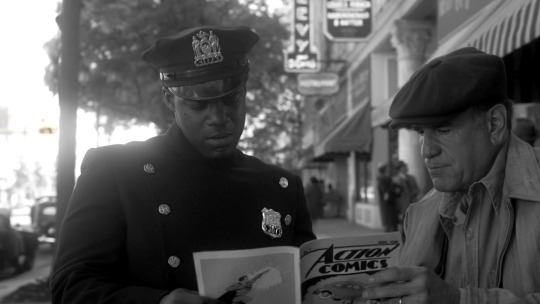
© HBO
Notably, there are no plans for a second season of Watchmen. Rather than a question of HBO’s reticence to renew (I’m sure they’d love to), Lindelof himself has stated his intention for the show to end where it does — his exhaustive love-letter to the ever-extending Watchmen epic. As much as we have become accustomed to the fulfilment of our insatiable desire for sequels, we should be grateful that this symphonic limited series and Its Extraordinary Episode will exist in illustrious isolation. Like Nostalgia, some things are best consumed in small, perfectly measured doses.
Watchmen is available to stream on HBO Max (US), Amazon (UK, £11.49), HBO Go (elsewhere).
Other Anchor Episodes for Your Viewing Pleasure:
Sopranos Season 3, Episode 11 — Pine Barrens (HBO / Now TV)
Mad Men Season 4, Episode 7 — The Suitcase (Netflix)
Atlanta Season 2, Episode 6 — Teddy Perkins (Hulu / Amazon)
Better Call Saul Season 2 Episode 7 — Inflatable (Netflix)
The Wire Season 3, Episode 7 — Back Burners (HBO / Now TV)
Bojack Horseman Season 5, Episode 11 — The Showstopper (Netflix)
Westworld Season 2, Episode 8 — Kiksuya (HBO / Amazon)
Succession Season 2, Episode 8 — Dundee (HBO / Now TV)
The Marvelous Mrs Meisel Season 2, Episode 7 — Look, She Made a Hat (Amazon Prime)
youtube
0 notes
Text
Black is King: Africa Beyoncéfied

I really enjoy watching old music videos on YouTube. It reminds me of simpler times: before CGI, insanely big budgets and, well, YouTube.
Lately, I’ve been tripping on Kate Bush. Wuthering Heights sees her as a cosmic, cherubic teenager wafting alone in a field. In Army Dreamers she’s running through a forest with a blonde kid, stopping only to mesmerise with her phantasmal, milky eyes. In Breathing she’s stuck in a Zorb until freed to join some green-faced virologists in a lagoon.
Those are all delightful, but my favourite has to be Babooshka. Shrouded in a black veil, she cavorts, improvised and imperfect, with a double-bass; like a mime artist bride's first dance at an enchanted wedding reception. Then, the chorus kicks in. Wailing, she transforms into a steampunk warrior temptress, back-lit by a heavenly white glow; her hips uttering truths even Shakira’s could never profess to know. There is one camera, one room, one performer, two outfits, and one special effect – zoom. It’s lo-def, simple, cheap, and in its way, purely spectacular.
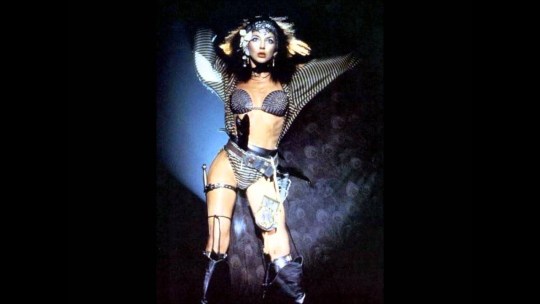
Fast-forward almost exactly forty years and, NOW STREAMING ON DISNEY+, Beyoncé releases Black is King – an ostentatious, opulent, enormous, 85-minute antithesis to the austerity of Babooska. In keeping with BEYONCÉ and Lemonade, it’s a “visual album” to accompany her (I suppose we need to call it now) “audio album” – The Lion King: The Gift. Both are inspired by last year’s CGI-update of the classic 1994 animation, following a similar storyline.
The film opens onto an “African” river. A wicker basket floats downstream, interspersed with shots of colourfully clad “Africans” in a variety of settings. James Earl Jones resonantly reiterates that “we are all connected in the great circle of life”. Under a pastel sunset, Beyoncé materialises on a beach in a flowing, white mille-feuille dress, holding a baby. There is spoken-word poetry, earnestness, shots of her daughter, a man painted blue. A group baptism ensues. Church organs sound. “You’re part of something way bigger”, she exclaims as she paints the face of a pre-pubescent boy.
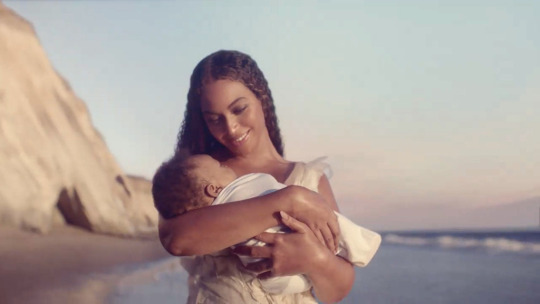
The imagery steeply escalates, every colour luminescent and outfits increasingly innumerable. Beyoncé in horse-print… on a horse. Beyoncé in a painting… as Mother Mary. Beyoncé in water, dripping with red rope. It turns out we’ve been in heaven. Or space. Or somewhere beyond both - blacker and more kingly. The boy takes off, becomes a comet, hurtling towards earth. Is this in 4K? 8K? 16K? Did they shoot it in Bey, not K? Whatever the definition, it is high. Babooshka, it is not.
This is irrepressible Beyoncé, lofty Beyoncé; the terrestrial goddess, progenitor of pop.
To make the film, Queen Bey – who also wrote, directed and produced – drafted in a wealth First off, a word about Beyoncé’s “Africa”. It is relentlessly proud and picturesque in a way perhaps no other film about “Africa” has ever been. It is cool, hot, sensual, and sincere. It is appealingly traditional yet ambitiously modern. It’s Africa filtered first through the American kaleidoscope, then again through a diamond encrusted Beyoncéscope.

But as my Ghanaian mother relentlessly reminded people, Africa is not a country. It is the second largest continent on earth. It is not at all a singular culture. To chop up a kilo of its prettiest bits and squish them all into one tasty, palatable burger would be horribly reductive. One can fairly assume that patty-fying Africa is not Beyoncé’s intention, but if Black is King’s aim is not to represent a real-life place, what is it intended to do? In Beyoncé’s own words from a June 29 Instagram post:
I wanted to present elements of Black history and African tradition, with a modern twist and a universal message, and what it truly means to find your self-identity and build a legacy.
So it’s an idealised agglomeration of cultural concepts in service of Beyoncé’s ideas about her true heritage, and by association, those of anyone that identifies as black. Pastiche-ifying Africa. Fair enough.
But as I watch, innumerable questions arise, thudding inside my skull to the rhythm of jovial afrobeats:
Where is the line between race and culture? Where does glorifying one’s ancestry end and appropriating a foreign culture begin? What legitimate connection does a billionaire American musician have to the African continent (where she has rarely visited and even more rarely performed)? Does being a dark-skinned American, 10-15 generations removed from your African ancestors, deliver a free pass to portray a place of 1.3 billion people you have barely been to?
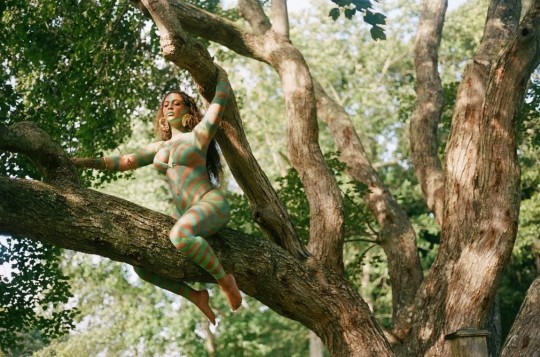
What if Beyoncé was white, but born and raised in Ethiopia, and she made this same film? Is Beyoncé, in fact, the best – or only – person to show a positive version of modern “Africa” to a global audience? Is she creating a falsely romanticised version of heritage for Black Americans or a necessary interpretation of the continent they have a natural, genetic attachment to? Is animal print and people in trees cool or offensive? Is it cool or offensive to present all black people as the descendants of Kings and Queens? Is Disney+ available anywhere in Africa and will it ever be?
Is this just a pop music video, geared towards Beyoncé and Jay-Z adding to their billion-dollar empire? Or is it a deeply meaningful, glamorous exposition of what it means to be black, whether diasporic or native to Africa? Is Black, in fact, King?
I can’t answer most of these questions because I could argue both sides ‘til the Beys come home. Black is King is simultaneously superfluous and necessary; respectful and insulting; clever and vapid. It’s completely absurd, and completely logical. Part of me is appalled, but the majority, absorbed; addicted.
I can’t look away. It’s the Beyoncé Paradox.
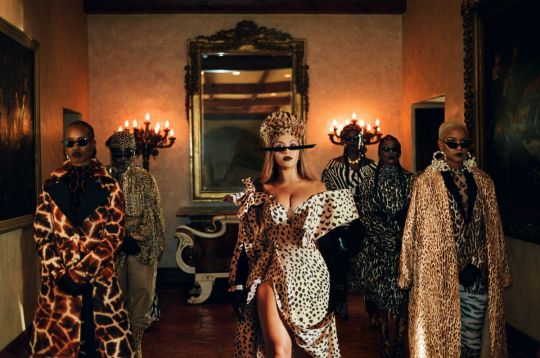
Many of these contentions arise because Beyoncé is so often front and centre; royally, religiously presented. In fact, the scenes without her – those dominated by West and South African rappers, singers, and nameless dancers – offer the most exhilarating, authentic, and refreshing moments. Had she chosen to purely direct rather than star, or stayed a little more in the background, her broader message may have been elevated. Instead, with her plumb in the middle, Africa is necessarily re-invented in Beyoncé’s image; moulded to fit the Beyoncé narrative - not that of the global Black diaspora, “Africans”, or nationals of its 50+ territories, hosting 2000+ languages. In this world, Beyoncé is King, albeit a benevolent one that invites her African subjects to participate in amplifying her personal glorification, ancestral identification and iconographic myth-building.
This is the artist’s prerogative, but ultimately, attributing deeper meaning to the film than it being a fundamentally superficial exercise in branding Beyoncé as Disney’s African Queen feels pretentious. Arguable, but pretentious.
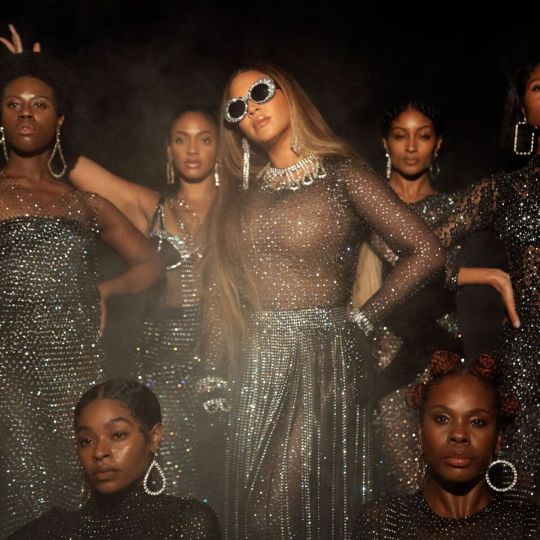
That said, just as a joke is only offensive if it is insufficiently funny, when something is as beautiful, stimulating, and cool as this, does anything else matter? If people are happy to pay $7 a month and find some fantastical personal solace in it, what harm does it do? In the end, it’s a big, sexy, pop music video. Entertainment. Treated predominantly thus, it is, in its way, purely spectacular.
So watch it. While Lemonade had far deeper meaning because of her proximity to the subject matter, Black is King is still Beyoncé’s most stunning video to date. Its form and existence raise challenging questions about race, heritage, culture and society, but in the end, the sheer scale and sumptuous visual onslaught will inevitably win out.
Streaming now on Disney+.*
(*Not available in Africa)
Black is King Trailer
youtube
Babooshka
youtube
0 notes
Text
Parents are the Worst.
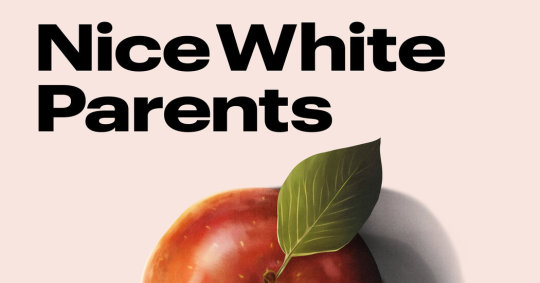
I recently began listening to Nice White Parents, a new podcast hosted by self-confessed nice white parent, Channa Joffe-Walt. It’s produced by the people in and around Serial, This American Life, S-Town and The New York Times. If you are familiar with those titles, you’ll know what to expect – in-depth, considered analysis of a heretofore, under-exposed social issue, executed with an East Coast progressive liberal stride; a pleasingly audible, irreverent gait and the swagger of emotional intelligence and self-aware humility. Through research, interviews and attaching herself to the Brooklyn School of International Studies for several years, Joffe-Walt tells the story of the New York Public school system and its apparent failure to meaningfully integrate itself since Brown v Board of Education made racial segregation illegal over 65 years ago.
In episode 2, Joffe-Walt tracks down and interviews some nice white parents from around the time the school opened in 1963. These people had written letters encouraging the school board to erect the school building closer to their own neighbourhood (and consequently further away from the darker-skinned families it was more likely to serve). They expressively emphasised their wishes to send their kids there and virtuously aid the process of integration, which they believed to be morally imperative.
But apparently, none of these letter writers subsequently sent their kids to that school. It remained, as anticipated, a predominantly non-white school. Laid alongside the tense machinations of the contemporary school’s invasion by a large new cohort of white parents and their issue, Joffe-Walt’s hypothesis is that white parents have always held liberal aims, and the clout to impose them, but do so with little consideration for their non-white counterparts or any real commitment to seeing through the incumbent practicalities. From the outset, this natural conclusion is persistently hinted at, not least from the podcast’s deliberately provocative title. Perhaps, on an individual level, this hypothesis contains some truth.
However, as the story extends, the blame gains weight and the theory mutates into a generalised accusation. Responsibility for the mediocre state of New York’s (and by implication, America’s) public schools is explicitly laid at the pale feet of white parents. It's an exposition of what is often described as “White Guilt” and its corresponding effort at contrition (i.e. the guilt felt from the inherited sin of one’s ancestors’ oppression of non-white people, primarily through slavery). While White Guilt might have its conceptual uses for a few people to come to terms with idea of race (although even there I am sceptical), its value as a wider social narrative is deeply unconvincing, and potentially damaging. Nice White Parents does a good job showing why.
In the podcast, anecdotal evidence is drastically extrapolated to justify White Guilt. Unless backed up by unequivocal data, it is inherently flawed to base so much on interviews with a handful of people in their 80s about a letter they wrote in the 60s, and (in episode 3) a now middle-aged woman about her perception of school when she was 13. Equally so is to use the example of a single New York school to imply that nice white parents are universally responsible for all the failings of American public schooling. A quick empirical comparison with countries unburdened by America’s racial psychosis would almost certainly reveal this argument to be fundamentally false. I hazard to suggest that Joffe-Walt set out, either consciously or subconsciously, to prove the theory of Nice White Parents, and has therefore fallen into the trap of verification bias.
Of course, the truth is likely to be far simpler – green, cheddar, dead presidents and moolah (which middle-aged white people in American disproportionately possess). Better schools arrive from broad, deep and perpetual community investment – from good, affordable housing and well-paying jobs to well-paid teachers and decent facilities. That means higher taxes on the wealthy and better provincial management. If a completely non-white school district received $50 billion to invest in their community with educational improvement as its ultimate goal (that or the abolition of private schools), I suspect the idea of nice white parents would quickly evaporate.
It is plainly a damaging distraction to focus on the role of supposed-predisposed-racism of well-meaning, middle-class people, who simply want the best possible education for their children. Instead, the message for the “hereby accused” should be to use their numerical majority and voting power to advocate for systems that would reduce inequality, regardless of race. In this respect, it strikes me that wealth is a sacrosanct subject in America, something that one can never apologise for having too much of. Quite the opposite – the culture is built on celebrating those who hoard capital. Is it possible that Americans are taught never to apologise for having money, so those who see something wrong develop other issues, such as race, for which they can atone?
More deeply, the podcast reveals how the White Guilt narrative is in ideological conflict with the very wrong it is supposedly trying to right. Taken to its conclusion, it inevitably reinforces the idea that white people are innately superior, and race is the primary determining factor for success in American life. In the context of the podcast, it is applied to suggest that New York public schools are destined to fail their students unless white kids and their parents get involved. It is gloriously ironic that condemning the influence of white parents on public schools serves to reinforce the supposed inferiority of non-white participants in the education system… because of their lack of whiteness. At the end of episode 3, Jaffe-Walt lays this out:
Nice white parents shape public schools even in our absence, because public schools are maniacally loyal to white families even when that loyalty is rarely returned back to the public schools. Just the very idea of us, the threat of our displeasure, warps the whole system. So “separate” is still not equal because the power sits with white parents no matter where we are in the system. I think the only way you equalise schools is by recognising this fact and trying wherever possible to suppress the power of white parents. Since no one is forcing us to give up power we white parents are going to have to do it voluntarily, which, yeah how's that going to happen? That's next time on Nice White Parents…
(Consider replacing every mention of “white” in this excerpt with “affluent”. Would that not feel infinitely more true?)
In fairness, the honourable, “anti-racist” intention is clear – in order to defeat “white supremacy” white people need to accept their inherited and systemic superiority and eliminate it. Sadly, any idea centred around race – whether malicious or well-intentioned – is bound to collapse under even the slightest pressure. To be truly anti-racist is to recognise that race itself doesn’t exist (other than as an abstract concept that, having infected people’s perceptions after four centuries of concerted, localised propaganda, must be eradicated). Race has no basis in science or nature; it cannot be quantified in any reasonable, measurable way. Simply, it is a lie; invented to excuse the exploitation of others for the purposes of wealth-generation. To base one’s actions on it in any way is to take a leap of faith into a void with no landing. Race is a malignant, empty God; belief in which is destined to lead to malignant, empty behaviour. “Racism” and “Anti-Racism” (as it is currently understood) are therefore both empty, malignant religions, practiced in service of a non-existent deity.
Notably, there are still two episodes to go (released August 13th and 20th). Either might serve to recover some balance. But by episode 3, the stage is not only set for this conclusion to be drawn, but the 1st Grade nativity is in its final scene and the wise men are long since gone.
All that said, if you let the incessant racialization of all things drift past you rather than choking on it, as plain entertainment – storytelling rather than journalism – it’s still an engaging listen; well-constructed and convincingly told. Furthermore, on a non-racial level (if you can somehow listen beyond it), the podcast does have some value, since it reminds me of something I have long half-joked about – that parents (of all stripes) are the worst.
Aside from the obvious, complex Freudian reasons, on a socio-political level, when a choice arises between a laudable, achievable change and putting one’s own children at a perceived disadvantage in order to effect it, a parent will choose its child’s advantage almost every time. No matter their colour, few parents will sacrifice their own child’s prospects – even minutely – to advance the hypothetical children of someone else, or society more widely. Parents are company directors whose primary obligation is to their miniature, genetically-derivative shareholders – they’ll only vote for large-scale change if it is net-profitable or government-imposed.
And of course, parents should pay their kids the maximum dividend. Who else will? A parent is legally and morally obliged to do the best for the young life they are charged with defending. And therein lies the joke. Parents are the worst only because they are ubiquitous. They created you, me and everyone else. We all had them, and most people end up being one. It is therefore less of a criticism than an inevitable, evolutionary truth – just one we should probably be more honest and upfront about. Unknowingly, underneath (and in some ways, because of) its misguided, exhausting racial handwringing, Nice White Parents just about makes this point.
Listen to Nice White Parents here or wherever you get your podcasts.
#nice white parents#podcast#parenting#education#race relations#critical thinking#review#podcast review#npr#this american life#new york times#capitalism
3 notes
·
View notes
Video
youtube
Younger
I’m 10% sure
I used to be
Younger. With
Still pink lungs and
A thunderous hunger
For air,
Hoarse and hot,
To leave me
Light,
Entire and plundered.
The taste of grass, the
Hush of running
Fast. Faster.
To hope to tumble
Was the skill to master.
Regret?
I knew not what it meant.
As for bills or rent, it was only
Time we spent, making
Heavy bets in the back of cars
Of how far we might go,
And how big we might get.
We dreamt
In the daytime,
To sleep soundly
In the night;
Awoken by whispers,
Having grown in stature, as well
As in height.
Are those days so different
To these? As I appease
The stiffening breeze
Shifting summer sands
Of the little I used to want or need;
Fomenting fear of what I’ve done
And what I’ve seen;
Compounding what
I cannot forsee.
The self-fulfilling synonym
For everything,
When I was wee,
I’d hate to have been.
I long to trip and fall again.
Open my knees and
Cede my skin to
Free the kid that made me.
Let tears again break,
Let cherry red wisdom erupt, innate,
And softly,
Whisper me
Awake again.
I’m just 10% sure
I used to be
younger. But my 90% self
Needs that
To linger.
- Neal Gruer
January 2020
0 notes
Video
youtube
A poem, written and read by Neal Gruer, over photographs also by Neal, all taken from his book "Same Difference / Aceeași Diferență".
Full poem (and Romanian language version) below. More details about the book here: https://tinyurl.com/y9wl3xbf
Same Difference
You believe, knowing nothing,
You see, even blind.
You fight,
Sans rationale.
You love and You hate,
Yet neither can You elucidate.
If everything is simultaneously false and true,
How is it sure that I am not You?
------------------------------------------------------
Aceeași Diferență
Tu crezi, fără să știi nimic,
Vezi, chiar și orb.
Te lupți,
Sans rationale.
Tu iubești și Tu urăști,
Cu toate acestea, nu poți elucida.
Dacă totul este simultan fals și adevărat,
Cum poate fi sigur că eu nu sunt Tu?
0 notes
Video
youtube
To Now
For the billion words spoken,
Between silences, still, unbroken.
For the joy, owned and borrowed,
And the certain sorrows that followed.
For the decisions we made,
Whose consequences remain,
For the few frogs we kissed,
And the hundreds more we missed.
For getting it right,
Yet simultaneously, wrong,
For placing big bets,
Beyond the final furlong.
For the little we remember,
And the myriad we forgot.
For everyone we are -
Everyone, we are not.
For those who gave,
And those who took,
For every film, every song,
Every stage, every book.
For sickness becoming health,
Empty pockets retaining wealth.
For every lie, every truth,
And faithful belief, without proof.
For life being too short,
Yet auspiciously long.
For irretrievable loss,
Showing us how to go on.
For every wave that swept,
From our stern to our bow.
For everything before,
You led us to now.
by Neal Gruer
For Liz and Michael's Wedding
20 October 2018
3 notes
·
View notes
Text
Rome Knows
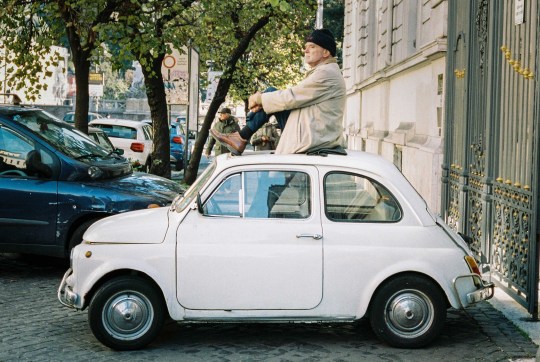
I used to believe Paris was the benchmark of romantic European cities. Why else would there be so many pretender Parises “of the…” East, North and South to choose from? I now realise that Paris is referred to so frequently only because no city has sufficient stature to make even the weakest comparison with Rome worthwhile (although perhaps, with the singular exception that Paris could legitimately be the Rome “of the” slightly-further-West).
Different to the grandeur, glamour, grit or grip of other major cities, it is gravitas that defines Rome. Where Paris looks down with disappointment, Rome simply has no desire to look down at all. It sits proudly in an opulent marble throne painted in pastel shades with brushstrokes guided by God. It is lit by celestial yellow fluorescence and draped on all sides by the finest fabrics and foliage. Its people converse with the flamboyance of an infinite opera; the shortest note lyrically issued with existential significance. Flailing limbs conduct rhythm and coerce crescendos: an escalation from piano to fortissimo with the decisive swish of darting digits.
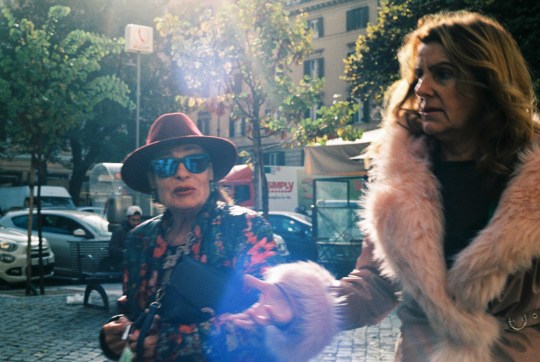
It is the city of mischievous goddesses and (un)saintly suitors, who fornicate in the streets to repent in the confessional (and more often than would be desirable to admit, vice versa). Eroticism versus evangelism, affluence versus austerity, Venus versus Jesus. The conflict leaves dirt between the polished cobbles. Between the flat-topped trees, the air is heavy with dust. Warm breezes offer relief, but fail to blow it clear. Instead it is carried it to the outskirts, where fraying lungs splutter and weary eyes squint.
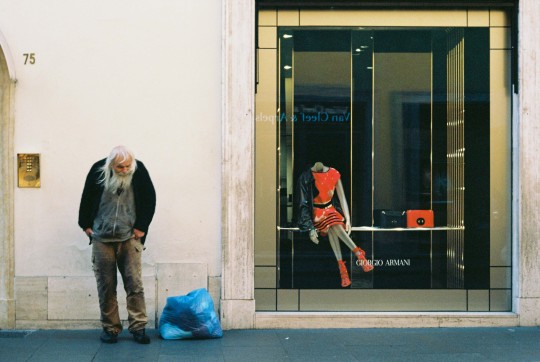
And yet, upon the briefest glimpse of a fur-clad, chestnut-haired woman, flowing past a street seller of chestnuts, Rome reveals the beauty that exist in its midst. Acidic espresso is best served with cannoli dolce. Rome is Rome because it manifests the tensions between good and evil, gluttony and poverty, admission and denial that every human being endures and enjoys. It vividly embraces both extremes of our instincts. Somewhere in between, there is peace, poetry and occasional perfection.
We all live somewhere between the pulpit of the priest and purse of the prostitute. This, Rome knows.
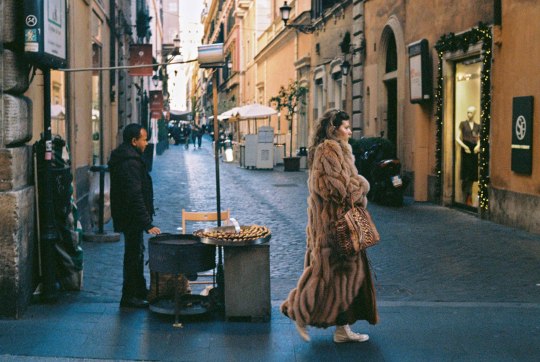
For more photographs, visit http://www.nealgruerphotography.com/rome.
#rome#roma#photography#35mm film#35mm photography#35mm#travel#europe#european travel#italy travel#italy#italia
1 note
·
View note
Text
Entire
A poem about love and life by Neal Gruer.
youtube
Following
the flightpath of
a freelance
bumblebee, we
Weave through wilderness,
shrouded by leaves, feet
Sticking in mud;
brittle branches grazing knees,
Ankles nipped-on
by nettles and ears,
munched-on by midgies.
Distracted constantly,
it’s a challenge to see,
Missing a glorious wood;
and finding only trees.
The
wind,
spins
direction,
Disregarding what we’re wearing for the weather we’re expecting.
Just in case, we build tall walls
for protection;
Too often forgetting what is
worth protecting.
When the sun finally bares
its golden soul,
There’s no gaps left for windows,
no glass for reflection.
We get lost in the overgrowth of our own
introspection.
But then we love;
and love with defiance.
A placard on a stick,
parting the crowd to find us.
Full of surprise, but immune
to surprises, catching
Fire like a match, but we’re
no match
When it catches.
Scientifically
chemical,
but Chemistry, beyond science,
It’s the whole fluffy cake;
Not just the icing.
Like Treacle,
we cling to it,
and like Gluten,
it binds us.
Occasionally subliminal,
but always sublime, a
Tenacious, tender tango;
scoring ten,
never nine.
When the chorus line around us loses their minds,
It’s a deep
spring of confidence, from being “ours”,
exceeding “mine”.
Yes, it eludes definition, but yet
we know it is divine:
Like a new born Unicorn:
through belief,
it survives.
With a wrecking ball
through walls;
in a clearing,
we arrive
Arrive to defy
space and time;
With just
Two hands, and
Two minds.
A simple sum,
Entire.
Originally written for the marriages of Doug + Tash & Ellen + Phil.
1 note
·
View note
Text
The Gravity of Athens
There seems to be a contest between Athenian shop-owners – who can display the most objects in their shop front? Window to window, products are piled perilously high and wide; filling the glass and the eyes of passers-by with an overwhelming variety of wares. It is the real-life equivalent of an online shop’s “View All” button; a visual fishing trip through retail aquariums; brimming with bits and bobs, all shining and packed together like sardines. It is not quite chaos, but it’s close to the edge. A nudge away from collapsing.
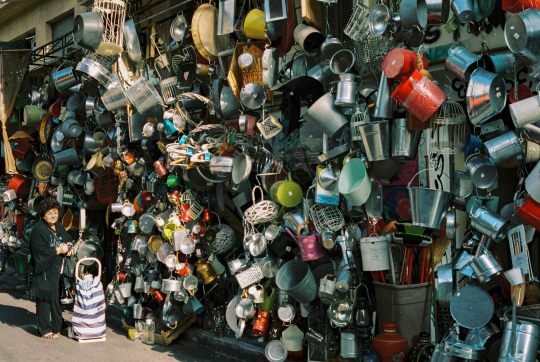
The city itself is the same. Wave atop wave of people and vehicles; recycling themselves and reappearing in a convulsive cacophony of discordant stimuli. Athens is constantly spilling onto itself – not quite in chaos, but close to the edge. It is held intact by the same tension that would threaten to pull it apart. A finely balanced agitation creating a social gravity that, for now, is enough to keep things in their place. But it feels just a nudge away from collapsing.
Nowhere is this energy more present than in the spacious Omonoia Square, smack in the centre of Athens. It pulsates erratically like a defective heart, fed by numerous veiny roads and emptied via two arterial streets. The diversity of the people is startling: the homeless and the well-heeled; brown-skinned immigrants – both recent refugees and long-standing residents; native Greeks – weathered and energetic; the old, the young, the desperate, the care-free. Colonies of pigeons nod in bemused agreement, as if to say, “Life is easier than you lot are making it look”. They strut across the concrete between polished and worn shoes; and cling, over-head, to cables that vibrate in time with the whine of endless scooters and the deep hum of packed buses.

A few lengthy strides south of Omonoia, the buildings rise up hastily, closeting narrow streets in which North African men trade in shops and makeshift markets. At a certain junction, the action collects into an estuary of activity. Cars and three wheeled vans slow – although only slightly – to edge past tables of bananas, oranges and pomegranates that impede their way. And perhaps also to avoid the potential for wrath from the policemen who gaze across the scene with hands on hips and furrowed brows. Further on, past heavily graffitied walls and unofficial-looking parking lots, the men trolleying boxes of produce begin to disappear. Suddenly, the sky rises back into view, exorcising the shadows but neutering the compellingly fraught atmosphere that those shadows embraced.

At the polite but steep route to the Parthenon, the immigrants are all the more temporary; clad in sunglasses and rucksacks, squinting at phones as they evaluate the location of their blue dots. Trendy restaurants and bars on one side, folding tables of tourist tat on the other. The crunch of fine stony sand underfoot and the occasional flutter of small birds are among the small collection of noises in breach of the quiet. Upon reaching Athens’ most looming landmark, a dog can be found sleeping beside the gnarled trunks of a breezy olive grove. She sleeps in a custom made trench oblivious to the Chinese, Spanish, French, Scottish, Japanese, Indian, American humans trundling past in their droves. She is pleasantly indifferent to the historic importance of the crumbling pillars only a few metres away and the anxious lives that they now overlook, at the foot of the hill. The progenitor of democracy and the womb of civilisation, now a bassinet of debt and a cradle of the displaced.

In the daytime, everything is yellow and blue: cabs, phone booths, buses, walls, the paving of the sidewalk. All are made fluorescent by the high, warming sun and the bright, clear sky. It is difficult to decide whether this colour scheme – some of it civically chosen and some coincidental – is an ungenerous kind of fateful irony, given the state’s ongoing reliance on the yellow and blue of the European Union’s bespangled banner.
By night, perhaps envious of elsewhere, the city turns green; brightly lit by the secular crosses that glow above countless pharmacies. Elsewhere, kebab shops and bakeries illuminate the one-way streets with purring white lights and the enticing aromas of golden flour and succulent meat. Through the large windows of betting shops and sparsely furnished bars, men huddle together, playing games, smoking cigarettes and congratulating themselves on a day well fought. Just outside, stray cats congregate into populous, fluffy gangs; prowling the green streets, stretching weary limbs and congratulating themselves on a day well fought.
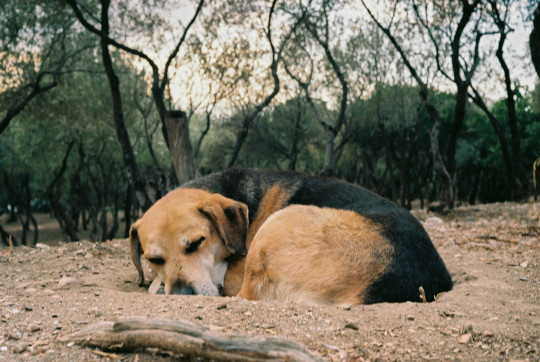
It feels like a place out of its comfort, yanked to and fro by the conceits of geopolitics, the apathy of economics, and the vulnerable collateral of nearby conflicts. It is a solemn place. Maybe it has always been. Regardless, its current weight makes it a fascinating place.
See all the photos at http://www.nealgruerphotography.com/athens
0 notes
Text
What caused the demise of Western democracy? Simon Phillip Cowell.
Western democracy is eating itself. Woah, look at it go! Brexit, nom; Trump, nom; Renzi, nom; Le Pen, nom; Panama Papers nom; coup in Turkey, nom; bigger gaps in Toblerone nom, nom non-stop-hashtag-nom. It’s a big budget, humourless nom-com starring a shaven-headed Hugh Grant, who roams around London assaulting people on council estates: a.k.a. Forty Funerals and a Machine Gun Wedding.

The rigid, stony, democratic structures established in the 20th Century are crumbling like oatcakes under the cheddary weight of modernity and all its inelegant trappings, such as the use of nonsense words like “nom”. But why? A whole lot of things have been blamed, but there is one factor – let’s call it, ahem, an X Factor – which has unacceptably been left out of the firing line.
In 2000, Facebook, Twitter and the ipod – let alone the iphone – were yet to exist. The twin towers stood in New York; Tony Blair had a 55% approval rating. Julian Assange was a low-level hacker operating out of his bedroom. Putin was in the first year of his presidency; Fox News had a paltry 200,000 daily viewers and the earth’s population had barely hit 6 billion. Nigel Farage was an irrelevant, newly elected MEP; Business was booming at Lehman Brothers and the Euro was brand new. Isis was a little-known Egyptian goddess with a chair on her head. Basically, everything was perfect.
Changes to all of these things played a role in 2016’s deconstruction of western truth and democracy-as-we-knew-it. But before any of those things took hold, something else pecked away at society’s good sense: a black-and-white, fluffily plumed, high-trousered, malevolent magpie calling himself “Simon Cowell”. Using the scientifically accurate analysis of hindsight, we now know with virtual certainty that everything is probably all his fault.
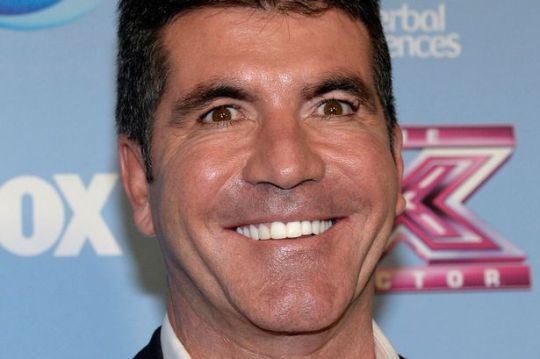
Like retracing a viral pandemic, we go back to 2001 to find Cowell’s patient zero: Pop Idol. Season one was deceptively benign. Will Young won the flashy singing contest and went on to have a respectable career. But underneath the gleeful warbling and elaborate vocal runs, something more sinister was a developing – a voting free-for-all that would change the idea of democracy in the minds of the public forever. It was the beginning of pure, widespread, modern populism in practice. You like something? Anything!? Vote for it! Pick up your BT landline and vote as many times as you like! Who cares if it’s terrible! Louis Walsh seems to know what he’s talking about! Wagner is a great laugh! He did make that song his own! What you see and hear is totally irrelevant! For 35p (plus any additional mobile network charge) you have the power to change the world/pick the singer of this year’s Christmas number 1! A revolution had begun.

The following year, American Idol had its advent. Again, its credible and subsequently successful winner, Kelly Clarkson, disguised the ongoing conspiracy. The power to elect anything with impunity quickly went to our heads. “Screw it – let’s vote for Michelle McManus! It’ll be fun! We’ll survive the entirely foreseeable, heinous consequences and aural bloodbath that will ensue!” (See also: Shane Ward “That’s My Goal”, and further, Matt Cardle “When We Collide”).
youtube
Things could (and should) have ended with Michelle, but, like the evolution of Skynet, Project Cowell was only in Phase 1. Next came The X Factor, and in marched the irrepressible Cowell T-1000. The X Factor had initially looked like a mercenary quest to find an inane pop star, but was quickly evolving into a slow-burning, clandestine means of destabilising democracy.
The alarm bells tolled loudest in UK season 6, when a perplexing portmanteau ostensibly named Jedward (a combination of the names of bizzarro twins, John and Edward, but actually just Edward with a J on the front) made it to week 7 of 10, defying logical explanation. 7 years on and an insufferable portmanteau called “Brexit” went several better; defying logical explanation and winning the referendum grand finale with Nigel Farage’s relentless and xenophobic rendition of “And I Am Telling You I'm Not Going”.
Would an eccentric duo known only as “John and Edward” have done so well? Would it have been so appealing to vote for “Britain’s Activation of Article 50 of the EU treaty”? Damn Cowell’s promulgation of the portmanteau and damn the EU passport-holding Irish twins who aided him. The Flotsam and Jetsam to Cowell’s Ursula, Jedward means Jedward.
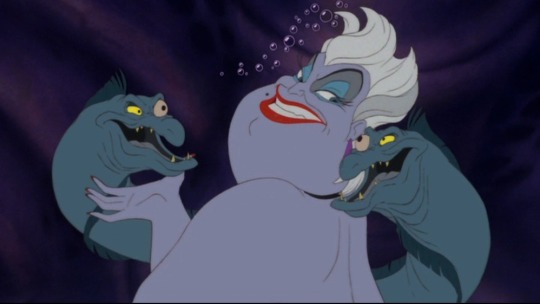
Aside from the relative successes of Leona Lewis and Little Mix, the majority of the show’s winners are now merely answers to a Tuesday night quiz in the kind of Benidorm pub where vodka Red Bull costs €3.50. For a pint. It confirms that we, the people, have no idea what we are doing. We’re all ambling around, drunk and amped up on Cowell’s Kool Aid. Now, when asked to vote for meaningful things, we automatically engage our ingrained X Factor mentality. We collectively support whatever is the political equivalent of Honey G.
At the epicentre of all this, Simon Cowell sits at his glowing desk grinning wildly; hair parted as if by Moses; wealthy, tanned and looking younger by the week. After 15 years, he’s entering his fourth, unelected term as democracy’s Terminator. At this point, only Strictly Come Dancing can stop him.
As they’ll say hoarsely and defiantly through the tears and nuclear smog in the impending, inevitable dystopia... “Keep dancing....Keep dancing”.

0 notes